














Looking into the crystal ball, we see major challenges ahead for the European ports sector. Today’s business models are being eroded and new realities await. It is important to recognise the changes underway and to build a strategic vision that offers continued health in what looks to be much more complex and difficult circumstances
“The only constant is change” is an appropriate remark to lay at Europe’s door.
Taking the macro picture, it is already clear that the world is no longer Eurocentric and that it will not be so in the future. This is underlined in the report, Global Trends to 2030: Challenges and Choices for Europe compiled by European Strategy and Policy Analysis System (ESPAS). It foresees, “Europeans will be fewer, older, and relatively poorer while much of the rest of the world is rising.” It further anticipates that even if European Union member states pool their resources, “Europe will remain outspent on security and defence. And as a global power is being redefined by rapid technological progress.” Europeans, the argument goes, lag behind China and the USA on emerging technologies and innovations.
Seismic changes indeed with the seeds of this change already seen to be in place. A situation that some believe is, in broad terms, mirrored in the European ports sector.
Today, we can see that Asia – Europe trade is slowing, impacting both container gateway and transshipment activities. Equally, the traditional link between GDP and trade growth has visibly weakened. Slower deepsea growth, increased emphasis on intra-regional trade and increased volatility overall are lining up as the new primary influences in the container sector with slower growth the dominant outcome. A scenario that promises to be challenging when it comes to making investment decisions and achieving a satisfactory return on investment.
There is also the prospect of increased emphasis on meeting new environmental requirements with greater regulation providing a catalyst to this. This too promises to have cost implications and is expected to further erode profit potential.
The scale of change is expected to deliver a shift away from existing port structures – one result of which may be the requirement for a greater level of public sector support.
Some may point to new business opportunities in the area of new clean fuels/energy hubs but with many European ports facing realities such as land only being available for these sort of activities at premium prices this is not a straightforward alternative.
By 2034 signs are that we will see a European ports sector that has undergone major structural changes, which requires new business models in order to operate effectively while operating in a market which is largely mature and typically features a more restrained trade development climate.
The international magazine for senior port & terminal executives
EDITORIAL & CONTENT
Editorial Director: Mike Mundy mmundy@portstrategy.com
Features Editor: A J Keyes keyesj186@gmail.com
Consultant Editor: Andrew Penfold andypenfold@yahoo.com
Regular Correspondents: Felicity Landon; Stevie Knight; Ben Hackett; Peter de Langen; Charles Haine; AJ Keyes; Andrew Penfold; Oleksandr Gavrylyuk Johan-Paul Verschuure; Phoebe Davison
Production
David Blake, Paul Dunnington production@mercatormedia.com
SALES & MARKETING t +44 1329 825335 f +44 1329 550192
Media Sales Manager: Arrate Landera alandera@mercatormedia.com
Marketing marketing@mercatormedia.com
Chief Executive: Andrew Webster awebster@mercatormedia.com
PS magazine is published bi-monthly by Mercator Media Limited, Spinnaker House, Waterside Gardens, Fareham, Hants PO16 8SD UK t +44 1329 825335 f +44 1329 550192 info@mercatormedia.com www.mercatormedia.com
Subscriptions
Subscriptions@mercatormedia.com
Register and subscribe at www.portstrategy.com
1 year’s digital subscription with online access £244.00
For Memberships and Corporate/ multi-user subscriptions: corporatesubs@mercatormedia.com


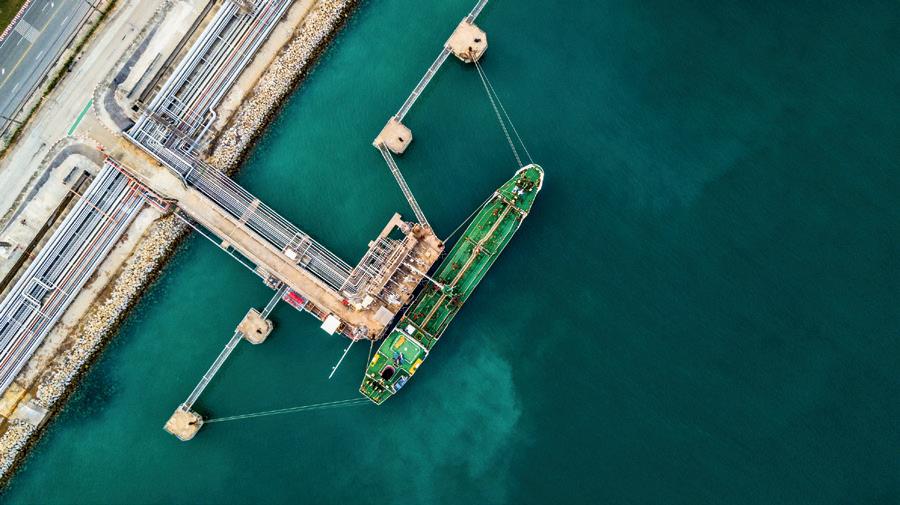





Europe –A New Reality Structural Changes Underway
Challenging Times in Europe Port Performance Assessed
Turbulent Times Box Port Challenges
Congestion Looms West Med Space Pressure
Fending Off Competition San Antonio Megaproject
OMT Game Changer Onne Progress
Bold Decisions Required Coastlink Conference Takeaways
Safe Mooring Systems Supporting Efficient Operations
China Coal Demand Heading South?
Charge for Shore Power Momentum, but Obstacles Exist 61 Reefer Monitoring Big Data, Algorithms & AI


X Ray Visions System Take-Up Builds




excellent connectivity throughout the region.
This new port is strategically located 120km south of Manila and only 9km west of Batangas City. It will become the leading international gateway for shippers based in the CALABARZON region (Cavite, Laguna, Batangas, Rizal, and Quezon), which is one of the Philippines’ fastest-growing regions, reaching a 5.2 percent growth rate in 2023, according to latest figures from the Philippine Statistics Authority. The region’s GDP represents 15% of the Philippines’ total.
Christian R. Gonzalez, ICTSI Executive Vice President, notes: “We are building a world-class facility that will unlock a wave of economic benefits for the region and the country. It will create new employment opportunities,

n The new container terminal in Bauan, Philippines, being developed by ICTSI will eventually offer an annual capacity of up to two million TEU and solidify Southern Luzon’s position as a key player in global trade
improve the quality of life for our host communities and the industries located around the terminal, and solidify Southern Luzon’s position as a key player in global trade.”
Gonzalez adds that this new terminal complements ICTSI’s strategy of providing a national network of ports with ICTSI’s brand of operational synergy that would further improve the country’s supply chain and competitiveness in global trade.
ICTSI runs a geographically diverse portfolio across six continents and 19 countries, with 32 terminals employing over 19,000 people.
n India and Iran have agreed a 10-year deal over the development and management of the Port of Chabahar. Located on Iran’s south-eastern coast along the Gulf of Oman, the port will be developed by India to support shipment of goods to Iran, Afghanistan, and Central Asian nations, bypassing the key competing Pakistan ports of Karachi and Gwadar. Continuing US sanctions on Iran have reportedly slowed the port’s development to-date

Minimize the risk of downtime and damages with Fogmaker’s fire suppression system!



The Fogmaker fire suppression system is tailormade for each type of material handling equipment.
High-pressure water-based mist chokes fires quickly and cools the area to prevent reignition. Fogmaker’s system is automatic, independent of electricity, and always ready!

Allegations of corruption relating to the granting of port terminal contracts, building permits and a beach concession have surfaced in the Port of Genoa, Italy. Two parties have been arrested in conjunction with the investigation, Paolo Emilio Signorini, former head of the Port of Genoa Authority and Aldo Spinelli, a major stakeholder in terminal facilities in the port of Genoa and also well known for his former role as owner of the professional football clubs Genoa and Livorno.
The Spinelli Group’s involvement in the port of Genoa includes operation of the Genoa Port Terminal, a container handling facility, and involvement in Terminal Rinfuse, originally a dry bulk handling facility. In 2015
UK-based investment firm iCON Infrastructure acquired a 45% stake in Lighthouse Italy Srl, the holding company for the Spinelli Group, which has been owned 100% by the Spinelli family since it was set up by Aldo Spinelli in 1963. In September 2022 liner operator Hapag Lloyd closed a deal to take a 49% stake in the Spinelli Group.
The Prosecutor’s office accuses Aldo Spinelli of paying bribes amounting to €75,000 to Paolo Emilio Signorini over a three year period to “obtain favours and resolutions” including the extension of the concession period for Terminal Rinfuse which
served to significantly increase its asset value. For his part Spinelli has claimed the legitimacy of his donations stating that these were made not just to a single party but everyone. Roberto Spinelli, Aldo’s son, is also in the frame for corruption charges relating to dealings with the Regional Governor John Toti.
It is understood that the Spinelli Group has made comprehensive changes to its Board including a new President and CEO while legal proceedings continue.
Aldo and Roberto Spinelli and the other involved parties remain under house arrest at the time of writing.
The dispute surrounding a new container terminal development in Colon Container Port (PCCP), Panama, which has seen China’s Landbridge Group ousted from the project due to alleged failure to meet contractual commitments, is hotting up.
The dispute is the subject of international arbitration but the latest development is that the Landbridge Group, a Chinese conglomerate with links to the Chinese Communist Party and the People’s Liberation Army, is now seeking to halt what it has described as a “sham arbitration process.” It has moved to request a US Court to issue an injunction as part of a broader claim that the arbitration is a fraudulent attempt to expropriate its investment in the new Colon terminal.
This latest move is seen as a
Contship Italia Group has reaffirmed Eurokai’s continued commitment to La Spezia Container Terminal (LSCT) through provision of an additional US$53 million investment in the facility, in addition to the already allocated US$266 million for the Ravano extension. To be undertaken in the next two years, the priority will be to enhance the Fornelli quay and purchase new equipment to improve competitiveness.

step that could influence future arbitration proceedings and the overall approach to resolving disputes arising from international investments. The Colon terminal project was 40% developed at the time Landbridge was ousted from it. Overall it is estimated to be a US1.4 billion project.
The Panama Maritime Authority revoked Landbridge’s concession
The U.S. Department of Transportation’s Federal Highway Administration (FHWA) has confirmed provision of US$7.1 million for port improvements in Louisiana. The Port of New Orleans will use this funding towards the purchase of new, all-electric heavy and light duty trucks to replace diesel vehicles currently in use, while also upgrading electrical infrastructure and evaluating new emissions-reducing equipment to improve air quality.
The European Parliament has confirmed an update to the TEN-T Regulation Agreement which acknowledges the value of strengthened synergies between the Trans-European Transport Network (TEN-T) and the Trans-European Energy Network. Regulatory updates recognise the need for infrastructure that facilitates carbon capture and storage deployment.
The move has a ground swell of support including lobbying from organisations such as Clean Air Task Force (CATF) and Bellona directed at including a reference to the role of diverse transport modes in transporting captured carbon to storage – thereby hastening decarbonisation measures for industry across Europe.
Both the EU Industrial Carbon Management Strategy and 2040 Climate Target Communication identify the key role of carbon capture and storage (CCS) in European industrial decarbonisation, halting millions of tonnes of CO2 from entering the atmosphere.
n Colon Container Port, the focus of a legal battle that could have significant implications for arbitration processes
in June 2021 and following this MSC partnered with Notarc Management Group, a global advisory, investment and management-consulting firm with a subsidiary in Panama, to finish the construction.
The Port of Portland has confirmed that it intends to continue providing marine container shipping services at Terminal 6. The port took over operations in 2018 following ICTSI exiting the facility but has struggled to attract container services. However, Tina Kotek, Oregon Governor, has included critical items in the 2025-2027 biennial bud get to support the facility, notably terminal development funding support
The revised TEN-T regulation sends a positive signal for the large-scale deployment of carbon capture and storage in Europe by acknowledging multiple modalities can be employed for CO2 transport.
Under earlier regulations, only CO2 transport via pipeline had access to administrative support and funding.
Cambodia Canal
Plans are proceeding in Cambodia to develop a canal that will reduce reliance on Vietnamese ports. Supported by Chinese backing, the scheme entails the construction of the 180-kilometre Funan Techo Canal which will run from the Takeo Canal of the Mekong River right through to merging with the Ta Hing Canal of the Bassac River in Koh Thom District. Project cost is US$1.7 billion.
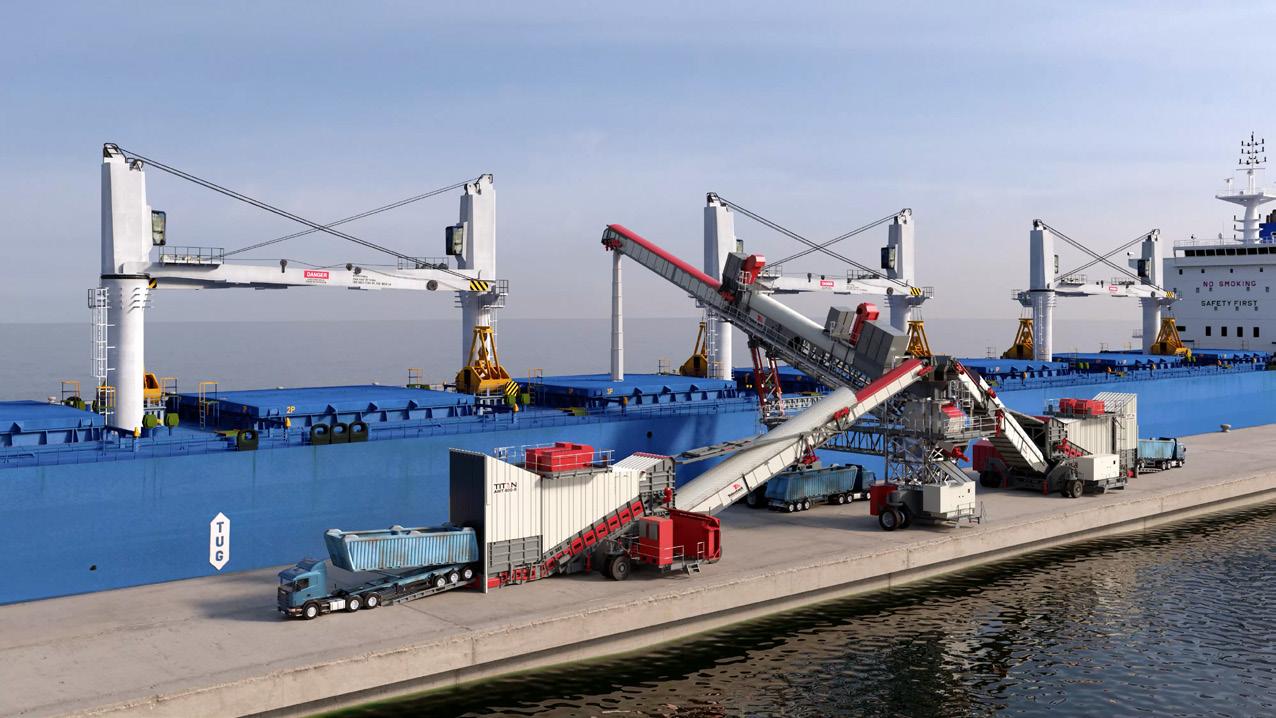


Serious questions have surfaced regarding the award to Adani Ports of the concession to operate the Dar es Salaam Container Terminal, Tanzania International Container Terminal

News of the award emerged back in February, via filings with Tanzania’s Fair Competition Commission (FCC), the nation’s anti-trust body. There has been no official announcement by the Tanzania Ports Authority (TPA) and it is understood that the acquisition is still subject to
The big question is though will the FCC do a proper job, in line with its remit, or will this simply be a process that is quietly seen through the necessary gates and the news announced at a time of
What is the reason for this scepticism? Well, apart from where Tanzania sits in Transparency International’s 2023 with a score of 40 (highly corrupt, an all-time high for the country), analysis of the process that the TPA adhered to in order to select an investor for TICTS highlights
Three cornerstones of a best practice tender process for a container terminal, and indeed other port terminal facilities, are: Marketing the Opportunity on
Heavily promoting the opportunity on a global basis to maximise investor interest and announce a formal process for the submission of Expressions
A Comprehensive EOI Process to Maximise Investor Interest & Optimise Selection
Structuring the EOI process so that it provides a clear framework for submissions giving adequate time for the issuing body to check that organisations comply with the qualifying criteria – relevant experience record, financial strength, performance capabilities etc. Following this, announcement of candidates to go through to participate in the formal bid process.
The Bid Process
Modern-day structures call for both a technical and financial submission – with points

gained for both elements, and the highest combination of points emerging as the winner. Again, a clear and well organised framework for submission is a fundamental requirement together with adequate time to fully understand how the terminal functions, the market served and to plan the best solutions.
It is apparent that there were serious shortcomings on the part of the TPA with regard to all three of these fundamentals.
Feedback from interested parties indicates that:
Marketing of the Request For Quote (RFQ)/Request For Proposal (RFP) related to the TICTS opportunity was only advertised in a local newspaper – no international coverage.
The EOI process/RFQ was unclear – specifically the submission criteria were not clear.
The Bid Process was rushed and queries were answered in a haphazard manner.
Add all this up and experience suggests a ‘game was in play’ or
to put it more succinctly that the winner had already been decided.
There is no logical reason whatsoever to not advertise such an important opportunity, one that can make a significant contribution to the country’s economic wellbeing, on a local basis.
Equally, lack of proper structure to the RFQ and RFP processes basically suggests the creation of ‘landmines’ via which interested parties will fail in the bid process. Similarly, another strong signal of this is rushing the RFP submission – what useful purpose does this serve in the context of a multi-million-dollar investment? It is a long way away from best practice in such bid situations as set out in such distinguished works as the World Bank’s Port Reform Tool Kit.
If any further evidence is required of what looks to be a controversial process then consider two further factors:
In the limited process that was operated for the RFP submission; after the submission of bids some
bidders were requested to submit clarifications but not all bidders received the email request from the TPA, only to be subsequently disqualified for not submitting information.
Last but by no means least, East Africa Gateway Limited is the Adani company acquiring TICTS and tellingly listed among its founding directors is Nazir Karamagi, a politician and former Minister in the Tanzanian government. How is this not a serious conflict of interest?
It will be interesting to see what the FCC decides with regard to the award to Adani. How can it possibly not take into account these obvious flaws and the detrimental effect they will surely have on the economic health of Tanzania? Let’s see if self-interest on the part of a few rules over benefit to the country as whole.




Building from a one-country operation at the Port of Manila in the Philippines, ICTSI has pressed forward across 35 years. On six continents, currently in 19 countries, we continue developing ports that deliver transformative benefits.
All across our operations, we work closely with our business and government partners, with our clients and host communities: to keep building momentum where it matters, in and through ports that keep driving sustainable growth.
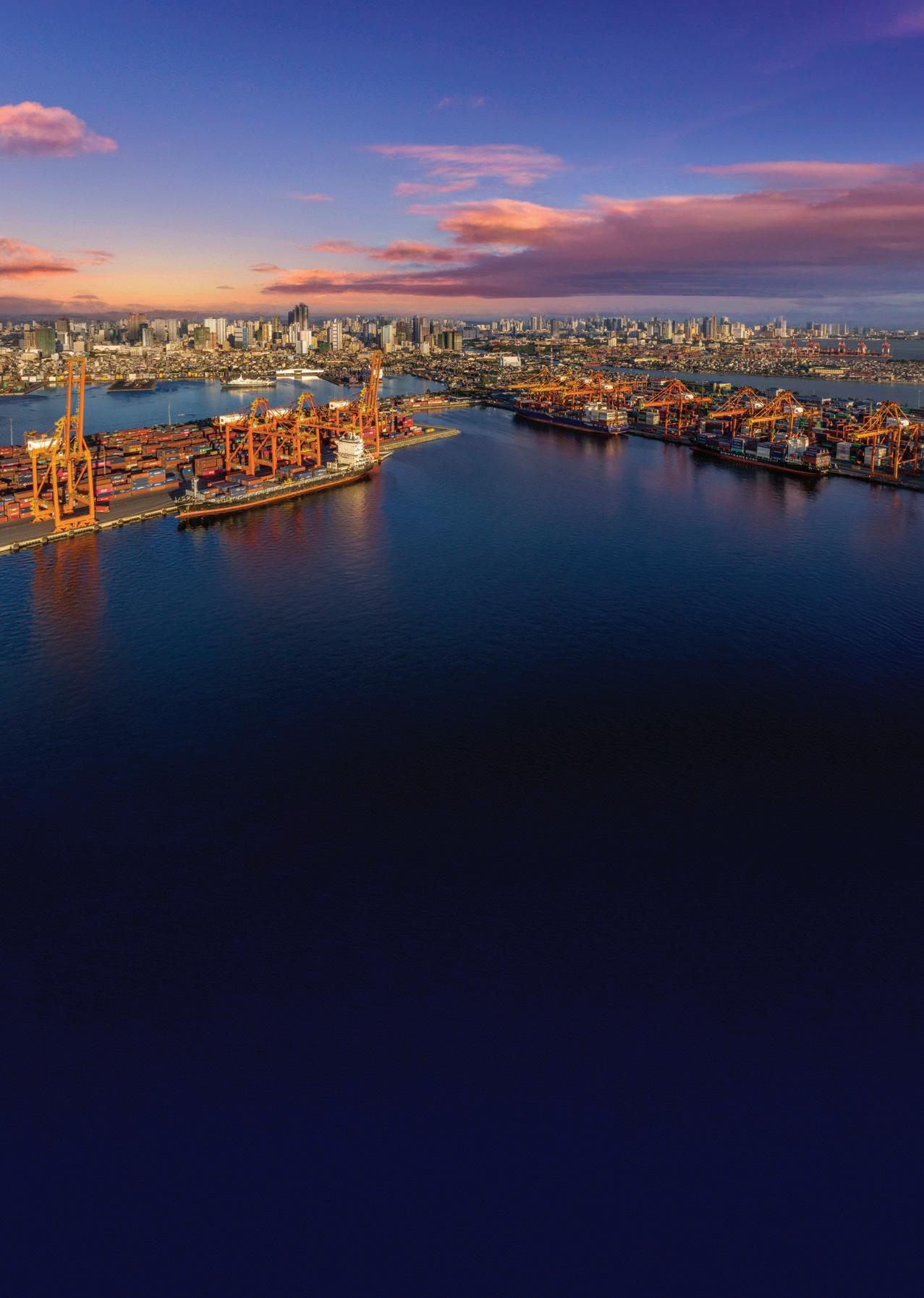


Port Skills and Safety Ltd (PSS) is calling on the UK Ports industry to improve data recording relating to near-misses and incidents.
PSS has completed a pilot data project to understand if AI can provide what it defines as “better root cause analysis” of port information to obtain better insight into safety risks.
PSS highlighted that more than 33,000 records were uploaded as part of this pilot project, which included almost 10,000 incident reports and 1000 near miss reports – the remaining records were classified as observations.
However, one of the main findings of the pilot programme was that in a high number of cases, the incident report contained only very brief information and a limited amount of useful data.
Debbie Cavaldoro, CEO, PSS, elaborates: “PSS has been promoting the recording of incident and near miss data for many years. But without the context of how that data can be used, it is difficult to fully understand what data should be recorded. If more detailed records are kept, including basic notes taken at the time of the incident, then ability of AI to identify root causes for near

misses and observations, will allow the port sector to learn lessons much more effectively and address the root causes most likely to be the cause of incidents in the future.”
PSS has confirmed it is intending to take the results of this initial project forward by encouraging more ports to take part, and crucially, to retain more of the data that arises from observations, near misses and incidents, so that the true value of computer learning, data analysis, and artificial intelligence can be realised.
PSS is the UK’s professional
n Forth Ports is one of five UK-based port groups working with Port Skills and Safety Ltd to improve data recording and analysis relating to near-misses and incidents through greater use of AI
safety and skills membership organisation for ports and has been collecting statistics on incidents and near misses in UK ports for more than ten years. Working with PSS member Comet; data, including first responder’s reports, investigations, and safety observations was collected from five ports, Bristol Port Company, Forth Ports, Peel Ports, Hutchison Ports and the Port of Blyth.
Port and terminal operator, Eurogate, has confirmed a new groundbreaking partnership with Prodevelop that will see a Digital TwinSim developed for the Eurogate Container Terminal in Hamburg, Germany.
Prodevelop is using its expertise in Internet of Things (IoT) and Big Data projects to implement what it regards as “revolutionary” solutions in generating a digital twin of processes and equipment, transforming operations and maintenance at this facility.
Patrick Jandt, Head of IT, Eurogate, explains how the process is developing: “As we approach the key stage of the TwinSim project, leveraging big data to visualise current operations in real-time and predict future scenarios, our collaboration with Prodevelop

stands as a cornerstone in our digital transformation journey.”
Eurogate has also confirmed that there is a focus on Industry 4.0 technologies, which will support seamless integration of terminal equipment into a unified view, thereby helping better optimise operations for enhanced efficiency and productivity.
The operator adds that pivotal
n Eurogate, has confirmed a new “groundbreaking partnership” with Prodevelop that will see a Digital TwinSim developed for the Eurogate Container Terminal
to the project is Prodevelop’s establishment of a Data Lake and innovative methods that better integrate IoT data from the physical layer with Terminal Operating System (TOS) systems.
PreGate for Holt Advent eModal (AeM) has confirmed that Packer Avenue Marine Terminal, operated by Greenwich Terminals LLC and a part of Holt Logistics Corp., has expanded its use of AeM’s eModal Community Portal with the deployment of PreGate at the Port of Philadelphia. This allows truckers and shippers to schedule appointments in advance to facilitate a more efficient entry and exit process.
Harbor Lab, the maritime software company modernising outdated accounting practices across the shipping industry, has raised US$16 million to help it streamline port call cost management processes. The company’s platform optimises the port cost management process for shipping companies, thereby enabling a single individual to oversee disbursements for up to 50 vessels vs today’s ratio of 1 to 6 ships. Harbor Lab further states shipping companies can reduce the margin of error from 20% to just 3% per port call.
‘Live Position’ has been launched by Hapag Lloyd. Representing the shipping line’s first dry container tracking option, this new platform offers full transparency on the location of shipments, from the start of transportation through to arrival at destination. The shipping line says key features include a user-friendly interface and easy-touse search functionality by container, booking number, or in batches and is flexible enough to make adjustments in real time.

Welcome to stand B30 and celebrate with us!
Rotterdam Ahoy Centre, 11-13 June 2024


The Port of Gothenburg has launched a new platform, dubbed ‘Digital Port Call’ to provide faster, safer, more efficient and sustainable ship calling processes.
This new vessel arrival initiative represents a new comprehensive digitalisation process, as Fredrik Rauer, Manager Port Control, Gothenburg Port Authority, explains noting that from the departure of a vessel from its previous port until it arrives at the Port of Gothenburg, large amounts of information need to be communicated between up to 120 different parties. These must all be actors who need to be synchronised, including
The Quantum Delta NL programme consortium of Port of Rotterdam Authority, Q*Bird, Single Quantum, Cisco, Eurofiber, Portbase, Intermax and InnovationQuarter have built a scalable quantum internet connection in the port of Rotterdam. After a successful trial, this new communication system hopes to improve the security of seagoing vessels that visit the port and deliver security against the threat of quantum computers.
shipping companies, terminals, tugboats, pilots, boatmen, and traffic planners.”
He elaborates: “With our Digital Port Call platform, all necessary information can be collected and processed into a common situational awareness that provides data-driven decision support throughout the call process. This provides better predictability and opportunities for more efficient resource planning, while any disruptions can be detected and addressed early.”
In addition, ‘Digital Port Call’ also enables just-in-time arrivals for vessels. By receiving a “digital queue ticket” well in advance of
Icom UK has launched its new, innovative, IP-M60 Hybrid Marine VHF/LTE radio. This product combines the reliability of traditional VHF communications with the versatility of 4G LTE connectivity providing users with communication covering both land and sea. This means the IP-M60 can be used offshore, in ports, on rivers, in container ports, harbour authorities and anywhere maritime and business communications are required.
Peel Ports Group has confirmed a new strategic partnership with Awake.AI to leverage AI-based solutions for berth planning and prediction.
The company explains that this collaboration is seeking to integrate Awake.AI’s innovative technologies into relevant systems by facilitating the sharing of situational awareness regarding port calls among end users.
Awake.AI’s Berth Planning and Prediction solutions are targeting significant improvements in port operations by increases in utilisation rates and reductions in both turnaround times and emissions.
arrival, vessels avoid rushing into the port area for a favourable slot time. Instead, it can adjust to a more eco-friendly and cost effective speed during the sailing from the previous port so that upon arrival in the Gothenburg port area, it can proceed directly to a pre-assigned quay.
When calculating the total reduction in anchorage and berth time, the Port of Gothenburg expects a decrease of 6000 tons of CO2 emissions in the port area per year thanks to the conditions created by the new platform.
A new joint initiative has been launched to digitally connect the maritime and inland port community by platform operators, Portbase and RheinPorts. The aim is to optimise the flow of data between the ports in the Netherlands and the inland ports on the Rhine through seamless exchange of data, import and export process optimisation, improvements in planning and the simplification of information to stakeholders.
Georgios Krystallis, Business Improvement Manager at Peel Ports – South East Ports, commenting on the partnership with Awake.AI underlines: “Their innovative solutions can be instrumental in revolutionising our operations, enhancing efficiency, and driving sustainable growth……on this journey of progress.”
UK-based Peel Ports handles around 70 million tons of cargo across its portfolio of eight facilities, which includes Liverpool, London Medway, Heysham, Clydeport and Dublin.
Global Shipping Business Network (GSBN) has added Philippines-based International Container Terminal Services Inc. (ICTSI), Westports (malaysia) and Portbase (Rotterdam) to its membership network digitalising container shipping and trade activities.Cosco Shipping, Cosco Ports, SIPG, Hutchison Ports and Hapag-Lloyd are members of the non-profit group targeting paperless global trade.
Flexible cables are essential for efficient energy supply and data transmission, especially in dynamic applications like cranes Prysmian’s state-of-the-art German engineering ensures these cables are perfectly tailored to specific conditions, preventing downtime and guaranteeing smooth operations With our comprehensive product and service solutions, we help systems operate efficiently and sustainably
With nearly 140 years of experience, a global presence, and a dedication to innovation and sustainability, we are driving the energy transition forward
Product Solutions for every application
Our extensive product portfolio covers all crane and hoist applications, including LV/MV Reeling, Spreader, Festoon, Chain, and Shore Connection cables These products are engineered to withstand the toughest mechanical and environmental conditions, ensuring reliable performance even under extreme stress We also offer hybrid cables that integrate power, data, control, and fiber optic elements in a single, efficient solution
Quality Assurance
Our rigorous testing and development processes ensure the highest quality and durability of our products Through comprehensive testing, such as torsion, cold flexibility, rolling, walk and chain tests, we simulate realworld conditions to enhance product longevity and reliability
Service Capabilities
Prysmian offers a range of services, including cable termination, on-site repairs, and custom configurations to streamline installation and boost efficiency Our expert teams can quickly repair and restore damaged cables, extending their lifespan and reducing waste, which directly supports our sustainability goals
Prysmian’s commitment to innovation, sustainability, and quality makes us the leader in advanced cable solutions for crane applications. Join us in driving the global transition to sustainable energy with cables designed to meet and exceed the toughest demands.




KEY PRODUCTS
PROTOLON MV reeling cables
Perfect for mobile equipment with high energy demands, offering durability and reliability
CORDAFLEX LV reeling cables
Designed for high mechanical stress applications, providing unmatched flexibility and resistance to torsion and abrasion
RONDOFLEX cables
Ideal for festoon systems, offering superior flexibility and minimal maintenance
SPREADERFLEX cables
Engineered for vertical applications with high mechanical stress and speed, ensuring robust performance
INNOVATIVE SOLUTIONS FOR THE ENERGY CHANGE
CORDAFLEX(SMK-200)
optimized design and cost attractive for electrified rubber-tired gantries (ERTGs)
SPREADERFLEX cables setting new lead-free standards for environmental performance
PROTOLON(SC) Shore Connection cables facilitate cleaner energy supply to ships in ports, supporting diesel-free operations and improving air quality in harbors
More info about our products
MEET US AT TOC EUROPE 11 - 13 JUNE AHOY ROTTERDAM BOOTH B32
US President, Joe Biden has confirmed plans to impose tariffs of 25% on a wide range of goods manufactured in China during 2024, including ship-to-shore (STS) container cranes, electric vehicle (EV) batteries, computer chips and medical products.
These increased tariff rates are part of a broader strategy by the US to seek to “safeguard” American workers, companies, and supply chains.
Yet the timing is pertinent, coming during heightened security concerns for US ports and alleged potential cybersecurity threats connected with port equipment developed and manufactured in China.
A major supplier of STS cranes to the US (and, indeed, on a global basis) is Shanghai Zhenhua Heavy Industries (ZPMC). This is a company with reported close ties to the Chinese Communist Party (CCP) and, therefore, the national government. As a result, ZPMC faces security challenges in the US with fears that its equipment
Crane systems supplier PACECO Corp., has confirmed a new pilot programme at Yusen Terminals Inc (YTI) in the Port of Los Angeles for the world’s first hydrogen fuel cell powered rubber-tyred gantry (RTG).
The new unit, known as a H2-ZE RTG Transtainer Crane, has been developed in collaboration with MITSUI E&S and with funding from the Japanese New Energy and Industrial Technology Development Organization (NEDO). It commenced operations in mid-May 2024.
The new design RTG runs 100% on fuel-cell hydrogen technology,
The Port Authority of Guam (PAG) has approved the procurement of up to three new cranes. The acquisition of these new Ship-to-Shore cranes comprises the first new cranes that the port will procure in its 48 years of autonomy. All previous cranes have been sourced as secondhand equipment, previously owned and operated by other US ports. The current units are 40 years of age and need replacing by 2029.
n The Biden Administration is imposing 25% tariffs on STS container cranes manufactured in China as US security concerns rise in conjunction with such units

can play a role in terms of spying and espionage.
The decision to impose tariffs follows an Executive Order issued by the Biden administration in
February 2024 that includes improvements in maritime cybersecurity and strengthening supply chains. A key part of this initiative is the provision of
US$20bn to help facilitate STS crane manufacturing domestically in the US spanning new units and the replacement of existing Chinese-built cranes.
representing an unprecedented first for terminal operations, offering the ability to achieve zero emissions with large container cranes without connecting to the electric grid.
The fuel-cell power pack (FCPP), an efficient power system replacing a typical diesel genset, was designed and built by MITSUI E&S in Oita, Japan, with hydrogen being provided by Toyota Tsusho for the project.
JF Fendercare Deal James Fisher Fendercare (JF Fendercare) has confirmed a new contract to supply bespoke fixed cell fenders and bollards in Singapore, as part of consolidating terminal container activities and improving levels of efficiency and sustainability. This deal is a component of a project entailing the reclamation of 387ha of land, provision of 23m of deep water and 8.6km of quay wall with overall project completion in Q1 2027.
Modification of existing conventional diesel RTGs is possible to achieve zero emissions with the FCPP system.
A typical diesel-powered RTG crane emits the carbon dioxide equivalent of burning over 400 barrels of oil per year, while the H2-ZE RTG Transtainer Crane emits nothing. This pilot project is scheduled to operate over the next four years at YTI Initially, the crane will operate
OneStop Deal OneStop has confirmed it is partnering with DP World to drive innovation and efficiency at DP World’s new state-of-the-art container park at Fisherman Island, Port of Brisbane. The facility will use OneStop’s Depot Operating System, OneStop Modal, to ensure fast and reliable container transactions, with OneStop’s Vehicle Booking System (VBS) further expediting traffic flow management.
for 16 hours per day and will perform at the same efficiency level as a conventional dieselpowered or hybrid rubber tyred gantry crane. In addition to emissions reduction, the crane offers reduced noise pollution for port workers, both those operating the machine and those in close proximity to it.
Cavotec has signed a new service agreement with the Port of Salalah, Oman. Cavotec previously installed 32 automated, MoorMaster vacuum mooring units at this major container port. However, the aim of this new arrangement is to support the port’s efficiency and throughput by minimising downtime and ensuring continuous operation of essential equipment. Cavotec currently works in 30 different countries.
































































































































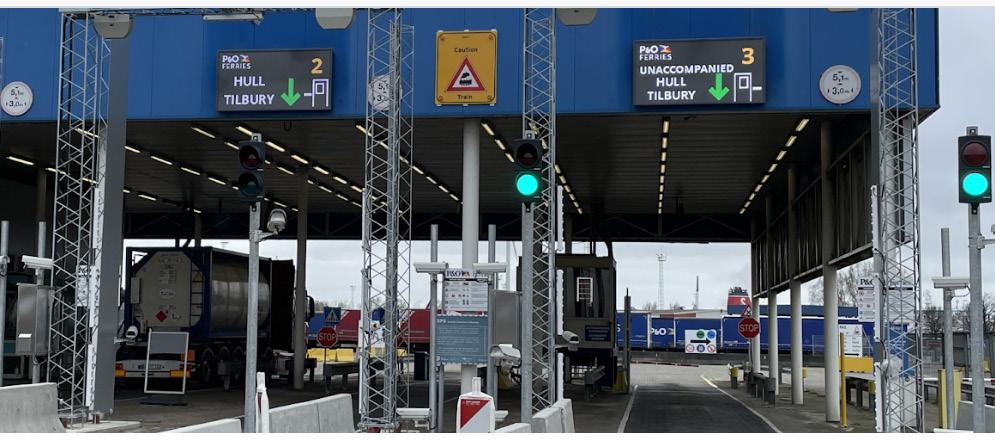
A new automated gate system has been launched at P&O Ferries in Europoort, in collaboration with port technologies supplier Surikat.
As a result of the Fast Gate solution being placed into operation, P&O Ferries is expecting to see improved efficiencies in data management and customer services for freight operations involving both road and rail activities.
Surikat has confirmed that Fast Gate features include:
Handling all gate processes for rail, plus accompanied & unaccompanied freight.
New electronic signage at the freight gate to provide clear and easy-to-follow instructions for drivers.
A Visy camera portal that will analyse all vehicles entering and exiting the terminal, for both road and rail traffic, providing ANPR (automatic number plate recognition), vehicle measurement and a full 360-degree capture of the vehicle and unit condition.
A self-service kiosk providing a multi-language user interface for drivers to gate-in and out of the terminal automatically, or to check in for a sailing.
An automated barrier system for swift entry and exit of the terminal.
“We are excited to introduce Surikat’s automated gate solution at Europoort, offering a streamlined and customer-centric approach to freight operations,” says Alex Cork, P&O Ferries, adding, “This system not only enhances our operational efficiency but also prioritises the convenience and safety of our valued customers.”
Bruks Siwertell has launched a new radar-based anticollision system, which enables supervised, semi-automatic unloading and a further option of digital hatch visualisation.
The use of radar offers distinct advantages in dry bulk handling. Even in challenging environmental conditions such as dust, fog, and snow, it is able to provide a very effective mechanism for digital
image generation, meaning it is possible to see the hatch and the material inside, with top, side, and overall views available.
This means that the operator can also see the distances in meters to the hatch coaming and the depth of the bulk material in the hold, making it much easier to make operational decisions in either manual or semi-automatic modes.
“Digital advances are offering new levels of operational insight, and safety improvements, including the efficiency advantages of being able to run the ship unloader or loader in a semi-automatic mode when our anti-collision systems are in us,” explains Krister Holmberg, Manager Electrical Systems, Bruks Siwertell.
UNIT53 Inc. has extended its product line with the addition of a 53ft dry safety container, designed to offer the highest standards of cargo security and developed with sustainability in mind.
Available for the North American domestic US market, including Canada and Mexico, the 53ft lockable safety container has
been designed in response to the ten-year high in cargo theft. Safety features include solid doors, reinforced with safety pins and plates to provide an extra layer of protection against theft and tampering, and lashing rings that allow the stable stacking of cargo during transit.
Optional tracking by Traxens/ Hoopo enables clients to trace
their cargo at any point in the shipping process, from loading through to final destination.
In addition, UNIT53’s dry safety container can be fitted with an internal locking system to provide verifiable evidence of a secured load, key for obligatory compliance with U.S. Food & Drug Administration’s Food Safety Modernization Act (FSMA).
Kalmar, part of Cargotec, has concluded an agreement with Uniport Srl. to supply three TR618i heavy terminal tractors. The order was booked in Cargotec’s Q2 2024 order intake, and the machines are scheduled to be delivered during Q4 2024. These new units will come with cabin air suspension, an optional feature to increase comfort for operators during shifts. Uniport is located in the Port of Livorno, northwest Italy.
The Port of Long Beach has broken ground on its new truck charging station, which is to be managed by Forum Mobility. The facility, set to open during Autumn 2024, is being built to meet what the port says is accelerating demand for heavy-duty electric truck use, as part of its drive towards ensuring zero emissions for drayage haulage by 2035. This new facility will offer 19 dual-port chargers and six singledispenser chargers capable of charging 44 heavy-duty electric trucks simultaneously in about 90 minutes.
(SFT) has delivered four Parallel Motion Fenders to Thunderer Jetty, located on the banks of the River Thames in Dagenham, East London, Each of the four sets consists of two cone fenders SPC 1100 mounted back-to-back, to allow for twice the energy absorption and large closed box steel panels (2250 x 9930 mm). The project scope also included two more Fender Panels (2100 x 9930 mm) and eight sets of Bollards with various capacities.

UNIT45, worldwide market leader in 45ft containers, concentrates exclusively on the development, construction, financing and delivery of 45ft pallet wide containers for European shortsea/intermodal transport operators.
Transporting more with fewer movements, all handled with the same infrastructure as used for 40ft containers.
Achieve efficiency on all levels of environment and infrastructure. Reduce your transport costs and carbon footprint.
Start your intermodal journey with UNIT45 and contact us today for a suitable offer!
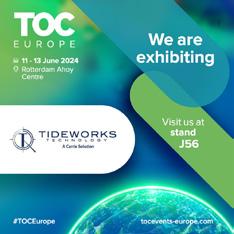
Click here to read article on Port Strategy online

Click here to read article on Port Strategy online
WE ARE THE EXCLUSIVE DEALER FOR SEVERAL TRIPLE A BRANDS IN THE PORT EQUIPMENT INDUSTRY. OUR CLOSE CONNECTIONS WORK TO YOUR BENEFIT: YOU HAVE ACCESS TO SHORT SUPPLY LINES AND A WIDE RANGE OF PRODUCTS. WHETHER YOU’RE BUYING, LEASING OR RENTING, GPE OFFERS DIFFERENT FINANCING OPTIONS. THANKS TO OUR NETWORK OF LOGISTICS EXPERTS, YOU’RE ALWAYS SURE YOUR MACHINE WILL ARRIVE PUNCTUALLY, NO MATTER WHERE IN THE WORLD YOU NEED IT.



Click here to read article on Port Strategy online

Click here to read article on Port Strategy online
The trajectory of European ports is changing – fundamental structural changes are underway. Andrew Penfold identifies the catalysts to change and paints a picture of the port sector 10 years on

The development of demand at European ports has been characterised by fairly steady expansion, with this linked to general economic growth and (for containers especially) a period of globalisation driven primarily by China. As is considered by A J Keyes in the accompanying articles, there is now a clear step-change in demand and, as the Covid crisis recedes, and its immediate fall-out is digested (a demand collapse followed by recovery), it’s clear that significant changes are underway. A simple reliance on increased demand to fund large scale port investment now looks increasingly misplaced. So how will the tension between investment and economic returns be squared?
What is going on in the market and what will the major ports look like in five- or ten-years’ time? Essentially, major ports are facing pressures from two key sources. On the one hand, macro- economics is shifting the ground on which port investment is predicated and – at the same time – changes at the regulatory level are also forcing shifts in the sector. How these forces will interact, and modernisation and expansion still be delivered on a profitable basis, will be the main driver of future port development in the major European ports. Since the early 1990s the emphasis on investment in the North Continent has been for providing increased capacity for containerisation, with a focus on market share considerations. With demand recording year-on-year increases this rising tide served to ‘lift all boats’ with increased volumes invariably justifying the pace of expansion. The rapid shift to larger
vessels also resulted in investment being focused on the largest capacity terminals for both gateway and transshipment activities.
The European Seaport Organisation (ESPO) has suggested that European ports will require investment of at least Euro 80bn within ten years. How this can be profitably delivered in a climate of slower growth is far from clear.
If we take a look at the key drivers here it is clear that things are changing. Most significantly, the pace of demand growth on the major Asia-Europe trade has slowed, with this impacting on both direct volume and transshipment volumes at the major hubs. This has been driven by uncertainties with regard to reliance on China and an only partially realised switching to alternative East Asian suppliers. The Covid experience and geopolitical uncertainties underlined the move towards ‘nearshoring’ at the expense of these deepsea trades. This is a global phenomenon but has been clearly manifested in the European port market.
The link between GDP and trade growth has also changed significantly in the past few years. According to broker Clarksons, between 2010 and 2020 the global link between GDP and trade volumes was placed at 1 : 1.02, with this representing a continuation of a well-established longer term trend. Indeed, the link for containerised goods was even stronger. The corresponding figure since 2020 has been 1 : 0.66. The major market drivers – slower deepsea growth, increased emphasis on intra-regional trade and increased
n ESPO puts a figure of at least €80 billion required for port investment within the next years but in all probability this will take place against a background of a lower profitability profile for terminal operators
Governments (and their Port Authorities) will come under increasing pressure to provide the investments that will be needed to meet their new policy requirements
annual volatility – are changing, but the sector will clearly need to adjust to a period of slower growth.
This will place further pressure on the major ports but will also offer opportunities in the sector. In the period since 2020, the pace of shortsea intra-Europe trade has increased more rapidly. The previously neglected shortsea terminal market is now receiving increased attention. The pace of demand growth in the Ro-Ro and Lo-Lo (containerised) markets has increased sharply and this process is still underway. Competition between these two modes has focused primarily on cargo value and overall supply chain costs but increased emphasis on environmental issues, carbon offsets and a lack of truck drivers have made the position complex. Investment in these shortsea terminals will increasingly be driven by local trading relationships and service levels. Reliable delivery will be the key as much as overall transport costs. This represents a considerable change in perspective for both operators and investors.
As if these shifts were not enough to digest, changes at the regulatory level make the outlook even more opaque. Environmental issues are now at the centre of port development in Europe. These are primarily driven by changing rules and priorities but – considered together –these will have far-reaching impacts. Specifically:
Emissions controls will become central. Already, we are seeing moves to electrify port equipment and this will continue. At the same time regulatory requirements will insist upon the provision of shoreside power for vessels when cargo handling. There are major uncertainties in this sector with regard to standardisation, but the overall constraint will be the expense of provision of these systems.
The shift towards hydrogen and other alternative fuels will see an increase in the amount of land required for the storage and handling of these commodities. In the North Continent port markets space is at a premium so the costs of this provision will be high.
Similar considerations apply to land required for the construction and maintenance of wind farms, with this already driving up land prices in some key markets.
Carbon pricing and the push for increased intermodalism will accelerate changes in port structures with this focusing investment on facilities serving immediate markets and also emphasising the importance of barging and other modal shifts.
A combination of these and other factors will change the structure of the European port sector as the emphasis shifts from expansion to environmental efficiency. The level of compulsion is also set to increase sharply.
In the next few years port investment in Europe will be increasingly focused on meeting stricter regulatory requirements, with this entirely driven by environmental concerns. At the same time, the pace of demand growth seems certain to be significantly slower than has been the case. Indeed, recent heavy commitments in some of the major gateway ports could see a period of overcapacity as deepsea and transshipment volumes record slower growth.
In this situation, the level of profitability for terminal operators will be squeezed and this will coincide with significant investment calls. It is not clear that the established structure of port investment will survive this change. Governments (and their Port Authorities) will come under increasing pressure to provide the investments that will be needed to meet their policy requirements. In ten years’ time we can anticipate a European port sector which is less profitable and increasingly reliant on external funding to meet structural changes.
It’s far from clear that this is a positive outlook. Investors will need to factor in the impact of all of this on their profitability and asset values. This may drive away the more speculative groups as margins will become tighter and state interests exert increased control over the sector.

n Short-sea operations, spanning lo lo and ro-ro, are expected see increased activity





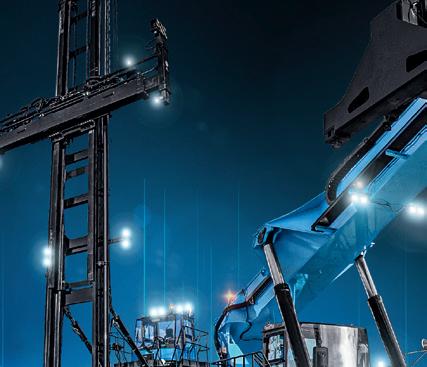




FOR A SUSTAINABLE PORT FUTURE
For a sustainable port future, we offer a full range of highly efficient electrified machines.










+ NO CO 2 EMISSIONS






+ LOW ENERGY CONSUMPTION







+ LESS MAINTENANCE REQUIREMENTS + REDUCED NOISE LEVEL

The Gdansk-Le Havre port range is the engine room for the North European mainland and handles a wide range of different cargoes. AJ Keyes assesses how the major facilities performed in 2023 and how 2024 has kicked off
While the ports of Le Havre, Rotterdam, Antwerp and Hamburg are known for their involvement in handling containers, the facilities in this geographic range of more than 600 nautical miles, are much more than gateway and transhipment hubs for boxes.
On the back of challenging economic developments globally, ports in this region faced a difficult 2023, which has clearly continued into 2024. So, what are the numbers behind port performance in the region and for the major ports themselves?
Figure 1 provides a summary of total cargo volumes handled for the calendar years of 2022 and 2023 for a wide range of key ports in the North European continental region between Le Havre and Gdańsk. Almost all of these main ports on this continent confirmed a drop of total performance for the 2023 period compared to the 12-months of 2022 –with the exception of Gdańsk, albeit that its volumes in 2022 were the lowest of each of the ports listed.
Table 1 provides a more detailed overview of cargo handling throughput for each of the listed ports, broken down by key types of activity, and for the full-years of 2022 and 2023, plus Q1 2023 and Q1 2024 activity (where reported).
There is a clear commonality from each of these major ports. Rotterdam regards 2023 as a year of transition, noting concerns about the “deteriorating investment climate” across several cargo sectors and pointing to a need for supportive government policies, while fellow Netherlandsbased port, Amsterdam, agrees that it was also in “full transition” as its throughput in fossil fuels declined.
…2024 is also expected to be an unpredictable year… ‘‘
Port of Rotterdam Authority
There were other similarities between the ports. The Port of Antwerp-Bruges cites “geopolitical tensions and slowing global economic growth” as driving down industrial production and trade flows, while in Hamburg the port also confirms that “geopolitical and economic challenges” impacted cargo handling demand, adding that the “declining development of the German economy and the subdued consumer sentiment” were major factors in the results for 2023.
Haropa Port, which includes the Le Havre facilities, points to a “declining global context” and national strikes for 2023 but felt it has “stayed on course” as it entered 2024.
The two major ports in the region have seen a tough start to 2024 and based on the release of Q1 figures (as available at the time of writing in early May 2024), there are clear indications of challenges being faced for the remainder of the current year.
In Rotterdam, total throughput for Q1 2024 dropped by 1.4% compared to Q1 2023, with 111.7 million tonnes falling to 110.1 million tonnes. The port authority explains that the decline is mainly due to the reduced throughput of coal, crude oil and oil products, although offset by some improvements in iron ore, scrap and LNG.

Dry bulk was down by 4.5% in the first three months of 2024 compared to Q1 2023, apparently due to lower coal volumes, with less demand for thermal coal for power generation noted. At the same time, liquid bulk throughput dropped by 3.1% to 52.6 million tonnes, a fall of 1.6 million tonnes of crude oil and mineral oil products handled. Q1 2023 was also when Russian oil products were being replaced. However, throughput of LNG, as a source of natural gas, again increased, by 3.6% to 9.1 million tonnes.
n Rotterdam is expecting 2024 to be an unpredictable year, with wider geopolitical issues impacting volume demand through regional ports
The Hamburg-Le Havre port range is the engine room for the North European mainland handles a wide range of diCerent cargoes. AJ Keyes assesses how the major facilities performed in 2023 and how 2024 has kicked oC
While the ports of Le Havre, Rotterdam, Antwerp and Hamburg are known for their involvement in handling containers, the facilities in this geographic range of more than 600 nautical are much more than gateway and transhipment hubs for boxes.
On the back of challenging economic developments globally, ports in this region faced diCicult 2023, which has clearly continued into 2024. So, what are the numbers behind performance in the region and for the major ports themselves?
Figure 1 provides a summary of total cargo volumes handled for the calendar years of 2022 2023 for a wide range of key ports in the North European continental region between Le and Gdańsk. Almost all of these main ports on this continent confirmed a drop of total performance for the 2023 period compared to the 12-months of 2022 – with the exception Gdańsk, albeit that its volumes in 2022 were the lowest of each of the ports listed.
Boudewijn Siemons, CEO & Interim COO of the Port of Rotterdam Authority provides further analysis of the Q1 results: “The throughput figures show limited imports of raw materials and exports of finished products. This tells us that European industrial production is still suffering from high energy prices and low demand from the biggest declining sectors such as construction and the processing and automotive industries. From the growth in container throughput, however, (see following article), we see the first signs that world trade is picking up. Nevertheless, these tentative signs remain highly uncertain due to rising global tensions.”
Antwerp-Bruges fared slightly better in Q1 2024. Total
Notes: Base data provided by each port/port authority and dataand.com
Notes: Base data provided by each port/port authority and dataand.com
Table 1 provides a more detailed overview of cargo handling throughput for each of the ports, broken down by key types of activity, and for the full-years of 2022 and 2023, plus and Q1 2024 activity (where reported).


cargo throughput reached 70.4 million tonnes, a rise of 2.4% compared to the same period last year. The port states that the result was achieved despite “a complex geopolitical and macroeconomic context.”
In more specific detail, outgoing flows of dry bulk rose by 9.7%, incoming flows fell by 24.4%, resulting in a fall of 12.1% in the dry bulk segment, with coal seeing a major decline of -68.8%. Throughput of fertilisers, the largest product category within dry bulk, recovered since Q4 2023, up by 33.9%, with demand for non-ferrous ores (+47.3%), and scrap metal (+5.7%) also higher. Lower demand from the construction sector affected throughput of sand and gravel (-12.5%) and cereals are increasingly being transported in containers rather than in bulk (hence a -43.7% drop).
For liquid bulks, growth was reported for Q1 2024 over Q1 2023 in throughput of fuel oil (+25.2%), gasoline (+12.1%) and LNG (+10%), while handling of chemicals and naphtha rose by
5.2% and 12%, respectively, despite the port authority explaining that there remained, “competitive pressure on the European chemical industry due to the high cost of energy, raw materials and labour.”
In releasing its 2023 calendar year results, the Port of Rotterdam provided a succinct summary of what was expected for 2024: “Against the backdrop of geopolitical developments and upcoming elections in several countries, 2024 is also expected to be an unpredictable year. It is all the more important in these turbulent times (for the port) to maintain a steady course and to implement plans that will further the transition.”
These words are already looking to be a reasonable synopsis of the position faced by the North European seaports industry as 2024 moves forward.
Gdańsk
Electric RTGs, available with busbar or cable reeling drum and hybrid machines with Liduro energy management are ideal for reducing your carbon footprint. www.liebherr.com

Liebherr Container Cranes Ltd.

The Le Havre-Hamburg/Gdansk port range sees some of the largest container ships in service, bringing substantial volumes to European consumers. How are these ports currently performing? AJ Keyes looks at current trends

The Westbound Asia-Europe route sees some of the biggest container ships in service bringing substantial volumes of cargo to European consumers. Add to this additional East-West transatlantic route activity and all North-South trades, then it is no surprise to note the immense scale of container port throughput in the range between Le Havre and Hamburg/Gdansk.
So, how have ports in this critical region fared during 2023 and what is expected for 2024?
Figure 1 provides a summary of the longer-term development of the major facilities between 2011 and 2023.
While there are other ports in the region, the listed facilities represent the majority of the deep-sea options and are a very good barometer for overall European development. For example, in 2011 the collective total was almost 38.4 million TEU, which had reached just over 42.6 million TEU by the end of 2023.
There have clearly been some fluctuations in this period, with the 2020 total (of around 44.1 million) impacted by the COVID-19 pandemic and 2023 seeing a decline of over 7.8% compared to 2022, representative of global economic challenges and geo-political issues (including in Ukraine and the Red Sea). Other longer-term trends include:
Rotterdam has always been the largest-volume container port, but Antwerp has closed the gap during the current decade, partly helped by Antwerp and Zeebrugge operating under one name going forward (initial agreement reached in 2021, with final ratification in Q2 2022 (to operate as the Port of Antwerp-Bruges)
The German ports of Hamburg and Bremerhaven were handling more containers at the start of the assessment period compared to the end of it
Le Havre has seen small growth, but overall throughput has remained largely consistent
Gdansk has enjoyed a successful period, although retains the lowest total throughput facility of all the ports listed
So, what are the port themselves reporting in their results?
For Rotterdam, a fall in container throughput of seven per cent to 13.4 million TEU for 2023 represents a continuation of a decline that began in 2022 and carried on for the most recent 12 calendar months.
The port authority referenced market volatility and, “lower consumption, lower production in Europe and the discontinuation of volumes to and from Russia pursuant to the sanctions,” even though port calls in this sector were up by one per cent.
A similar picture was painted in Antwerp-Bruges, with the port stating that “weak global economic growth and lower demand for commodities is impacting global demand for container transport.” This corresponds to a drop in container throughput of 7.2% for TEU traffic handled, although the port maintains that despite this position its “market share in the Hamburg - Le Havre range rose 0.6% points to 30.2% in 2023.”
In Hamburg, container throughput fell by 6.9% for 2023 compared to 2022, although it could have been worse, with the first half of the year lower by 11.7% over H1 2022.
“When we look at the development of our throughput figures, we are on the same level as our Northern European competitors and are holding our own well compared to other ports. The decline is primarily due to the difficult geopolitical and economic situation that we all are facing,” explains Axel Mattern, CEO of Port of Hamburg Marketing.
n Pursuing its strategic plan provides the development compass for the Port of AntwerpBruges in 2024



Geo-political tensions, economic uncertainty and inflation continue to linger in the background but there are some signs of recovery…
Despite the fall in containers handled, Hamburg states that it saw an increase of 14.8% in ships of 18,000TEU and above, with 272 vessels calling at the port. Other key results included growth of eight per cent (to 653,000TEU) for US trade, albeit this was still some way behind the 2.6 million TEU from China (itself a drop of 10.9% from 2022).
HAROPA Port, which includes the deep-sea facilities in Le Havre, France, states that its results for 2023 ensured that it “stays on course.” This update comes against a backdrop of 2.63 million TEU handled for 2023, versus 3.1 million TEU moving through its facilities for the comparable period one year earlier.
Clearly, 2023 represented a challenging year for almost all container ports in this key market, but how has 2024 started and what strategies are being adopted?
Rotterdam is undertaking key infrastructure and development projects in 2024 and this comes at a time when the container segment is showing a slight increase in throughput for the first time in three years. For Q1 2024, throughput was up by two per cent to 3.3 million TEU, despite the situation in the Red Sea seeing a drop of 24.5% in ship calls and Asian volumes down by 13.7% in January and February due to delays and missed sailings. A rebound of more ships arriving (up 11.5%) occurred in March, with feeder traffic to the Mediterranean up by 29% as cargo moved to this area to compensate from ships bypassing ports as they divert via the Cape of Good Hope.
Cautious economic recovery is the message from the port authority with plans for terminal expansion, improved road access in the port and better vessel access all pushing ahead this year.
APM Terminals (APMT) and Rotterdam World Gateway (RWG) are both expanding, with APMT adding two million TEU extra capacity. The completion of the quay is planned for the second half of 2024. At RWG, 45ha of terminal land and 920m of quay wall will improve capacity by 1.8 million TEU/yr. Both terminals are preparing for the use of shore power and carbon-neutral operations.
Elsewhere, the port’s Container Exchange Route (CER) went into operation in late 2023. The 17km closed road network currently connects the container terminals of Rotterdam World Gateway (RWG), the Delta terminal of Hutchison Ports ECT Rotterdam (ECT), the terminals and depots of QTerminals Kramer Rotterdam (KDD, RCT and DCS) and the State Inspection Terminal of the Customs Authority to improve security, efficiency and sustainability in the port. Finally, as more frequent and increasingly larger container vessels pass through the Yangtzekanaal to the Maasvlakte terminals, the navigable channel of the Yangtze Canal is being widened in three sub-projects. The first began in September 2023 and involves 500m of quay alongside the port entrance, with shored-powered berths established for 12 tugs. Completion is expected in early 2025.
SUSTAINABLE GROWTH KEY
March 2023 represents the best monthly throughout for containers at the Port of Antwerp-Bruges since March 2021,
GDANSK
Source: Ports, port authorities www.dataand.com
Source: Ports, port authorities www.dataand.com
Source: Ports, port authorities www.dataand.com
with almost 3.29 million TEU handled – amounting to a six per cent rise over Q1 2023.
CAPT – CAN THE ABOVE 2 CHARTS BE PLACED SIDE-BY-SIDE AND SMALLER, SO THEY TO BE ONE JOINT CHART? IF NOT, PLEASE DELETE TOP CHART
CAPT – CAN THE ABOVE 2 CHARTS BE PLACED SIDE-BY-SIDE AND SMALLER, SO THEY TO BE ONE JOINT CHART? IF NOT, PLEASE DELETE TOP CHART
These results were recorded following what the port authority described as, “economic uncertainty and inflation causing a global slowdown in demand for container transport” that ran into the beginning of 2024.
MIKE – BUT CAPT IF U CAN GET BOTH CHARTS IN IN THE LARGER SIZE THAT WOULD ALSO GOOD
MIKE – BUT CAPT IF U CAN GET BOTH CHARTS IN IN THE LARGER SIZE THAT WOULD ALSO GOOD
TEU
MARKET VOLATILITY…WEAK GROWTH
MARKET VOLATILITY…WEAK GROWTH
So, what are the port themselves reporting in their results?
So, what are the port themselves reporting in their results?
Moving forward, this major European port has a clear strategy, focussed on sustainable growth, which will see a 10year investment programme of €2.9bn on key infrastructure including a quay wall for the Europa Terminal, a new coordination centre and use of residual land on the left bank.
For Rotterdam, a fall in container throughput of seven per cent to 13.4 million TEU for 2023 represents a continuation of a decline that began in 2022 and carried on for the most recent calendar months
For Rotterdam, a fall in container throughput of seven per cent to 13.4 million TEU for 2023 represents a continuation of a decline that began in 2022 and carried on for the most recent calendar months
The port authority referenced market volatility and, “lower consumption, lower production Europe and the discontinuation of volumes to and from Russia pursuant to the sanctions” though port calls in this sector were up by one per cent.
The port authority referenced market volatility and, “lower consumption, lower production Europe and the discontinuation of volumes to and from Russia pursuant to the sanctions” though port calls in this sector were up by one per cent.
Jacques Vandermeiren, CEO, Port of Antwerp-Bruges explains further: “We had seen it coming for some time that: 2023 would not be a great year. After all, as a port, we are at the centre of economic and geopolitical challenges. But, with a powerful strategy, the merger and an efficiency exercise, we have managed to organise ourselves in good time and are even gaining market share in the Hamburg-Le Havre range. Especially in more turbulent waters, it is essential that we continue to sail in the right direction, with our strategic plan as our compass. That is what we will continue to do in 2024.”
HAROPA Port also confirms it is “continuing to invest” with €201 million being “dedicated to multimodality.” This includes construction supporting river access to Port 2000 in Le Havre, along with road and rail infrastructure improvements for Berth 11 and Berth 12, also at Port 2000, and in conjunction with MSC and TiL.
Times in 2023 for key European container ports have been challenging, but less turbulent waters seem to be on the horizon for 2024.
n Figure 1: Container Trade Development, Major Ports, in the Hamburg-Le Havre Container Port Range, 2011-2023 in ‘000

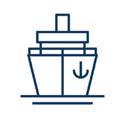




The West Mediterranean port region is seeing a surge in container demand in 2024. AJ Keyes assesses the position and asks what, or indeed where, the solution might be moving forward

Container transshipment hubs in the Western Mediterranean are currently seeing a surge in throughput demand. As a result, there are growing concerns that operational congestion may soon be faced. But what has been the cause and, more importantly, what is the solution?
Despite 2023 being a challenging year for some of the major ports in this region, there was also clear momentum gained as the year progressed. Mar Chao, President of Valenciaport (PAV), stated that there was a recovery in Q4 2023, with growth of 13.1% recorded for December 2023, 18.7% in November 2023, and almost 4.4% for October 2023 against the comparable months of 2022.
This upward trajectory continued into Q1 2024. According to PAV, for example, Asian traffic handled in the first three months of this current year reflects a rise of 23.3% over Q1 2023, with China the major commercial partner (with activity up by 36.4%).
Overall, Valencia’s total container port growth improved by 18% for Q1 2024 over Q1 2023. Further, if this level of activity is maintained as 2024 progresses then the total throughput for 2023 of 4.8 million TEU, will be surpassed and could then place the port perilously close to current capacity levels of around 5.9 million TEU.
Valencia is currently developing a new €2.5bn container terminal, which will be operated by Terminal Investment Ltd (TiL), the terminal arm of MSC. With a capacity of five million TEU planned, this facility will bring much needed additional space to the port, but the issue remains that it is not a solution coming in the near term – at least not soon enough if current growth levels are maintained.
Algeciras is unlikely to have space. The port has recorded an uptick of seven per cent over Q1 2024, which if it continues will see potential for five million TEU being reached, placing utilisation at the port towards 90%.
Tanger Med continues to rapidly increase its total throughput, the majority of which is transshipment. At the end of 2023, AP Moller Maersk completed phase two of its
million TEU expansion at APM Terminals (APMT) MedPort Tangier, Morocco. The 18ha project brings 400m of berthing and four new remote-controlled, ship-to-shore (STS) cranes. A timely Phase 3 of this project will reportedly be fully operational at the start of 2025 and increase total terminal capacity by a further one million TEU. While, however, it offers more space, it is only accessible if the capacity is not fully utilised by Maersk Line and other shipping lines are also comfortable using this facility.
There may be capacity challenges on the horizon for ports in the West Mediterranean region, following strong growth in the opening months of 2024 – is Malaga a solution?
Clearly there are challenges on the horizon for ports in the West Mediterranean region. Following a return to growth in the opening months of 2024, the threat of prolonged continuation of the Red Sea crisis brings challenges that need to be resolved.
However, the longer issues continue to impact the sailing routes via the Red Sea, the fear of dwindling breathing space for both shipping lines and port capacity will increase –especially for the West Mediterranean region where the ocean carriers are undertaking more transshipment to offset supply chain disruption.
To add further context, the Gibraltar Port Authority (GPA) states that around 60,000 vessels transit the straits on an annual, typical, basis. Of this vast total, GPA says that 20% of this activity are container vessels.
So, it is already a region seeing substantial shipping activity. Transshipment is by far the dominant activity at the
one

ports of Tanger-Med and Algeciras, (i.e. in excess of 95% of total container traffic) whereas Valenica (traditionally around 55%) and Barcelona (typically 40%) are involved in hinterland traffic, but also serve a key role supporting transshipment.
Figure 1 provides an overview of the longer-term development of the key ports included in the West Mediterranean region, namely Algeciras, Barcelona and Valencia (Spain), Tanger-Med (Morocco) and Marseilles-Fos (France).
Collectively, these ports have seen total growth of 4.8% per annum, rising from 12.99 million TEU in 2011 to 27.66 million TEU by the end of 2023.
On an individual port basis, there has been widespread long-term growth amongst these listed facilities. TangerMed has generated growth of 12.5% per annum, rising from 2.09 million TEU (2011) to 8.62 million TEU (2023). This makes the Moroccan port not only the fastest growing container facility in the West Mediterranean area, but also the largest in terms of volumes handled – and by some considerable margin in 2023. Increases at the other facilities ranged from 0.9% per annum (Valencia) to 4.1% (Barcelona), showing that every port continues to increase volumes.
For 2023, Tanger Med reports that growth over 2022 was up by 13.4% (to 8.62 million TEU) and was “equivalent to 95% of the port’s nominal capacity……accomplished four years ahead of targets.”
In its annual performance summary, the port adds: “The outstanding performance is attributed to the successful operations of terminals TC1 and TC4, managed by MaerskAPM, and the continuous development of terminal TC3, operated by Tanger Alliance (A joint venture owned by Marsa Maroc with a 50% stake, in partnership with Eurogate holding 40% and Hapag Lloyd holding 10%).”
UNFAVOURABLE COMPARISON?
So, Tanger Med has had a strong 2023 compared to other regional facilities. Container throughput at the Port of Barcelona reached 3.3 million TEU in 2023, representing a drop of seven per cent compared to 2022.
However, José Alberto Carbonell, General Manager of the Port of Barcelona, feels that there is a need to better understand the unique circumstances when explaining performance last year: “The Port of Barcelona’s throughput (in 2023) was a result of a complex international context, with an increasing number of geopolitical conflicts, low European demand and a significant cooling down of exports, in addition to the unfavourable comparison with 2022, during which we broke traffic records.”
(Morocco) and Marseilles-Fos (France).
Collectively, these ports have seen total growth of 4.8% per annum, rising from 12.99 TEU in 2011 to 27.66 million TEU by the end of 2023.
Figure 1: Development of Total Container Volumes at Major Ports in West Mediterranean Region 2011-2023, in TEU
TANGER-MED
ALGECIRAS
VALENCIA
BARCELONA
MARSEILLES-FOS
On an individual port basis, there has been widespread long-term growth amongst the facilities. Tanger-Med has generated growth of 12.5% per annum, rising from 2.09 million (2011) to 8.62 million TEU (2023). This makes the Moroccan port not only the fastest growing container facility in the West Mediterranean area, but also the largest in terms of volumes handled – and by some considerable margin in 2023. Increases at the other facilities ranged from 0.9% per annum (Valencia) to 4.1% (Barcelona), showing that every port continues increase volumes.
This is a valid point, especially in the wake of transshipment activity rebounding for the port in Q1 2024. For example, in February and March 2024, Barcelona has seen container volumes of this type increase by more than 60% compared to the comparable months of 2023. This level of growth being maintained during 2024 will place pressure on existing capacity at the port, with as much as 500,000 TEU of capacity potentially needed before the end of the current year.
Clearly, things have changed very quickly in the West Mediterranean port region.
HISTORY REPEATING ITSELF?
With a potential capacity crunch looming in the near future, and before known expansion projections come to fruition, is a return to using the Port of Malaga an option, or indeed the short-term solution?
The port has the space available; it has infrastructure and deep water because it was originally developed as a regional transshipment option, handling almost 550,000 TEU in 2008.
The port was also used by Maersk Line, until Tanger Med became an option and the shipping line gained access to its own facilities in a location immediately on major shipping routes.
How long will the Red Sea crisis last? Who knows. When the situation first occurred, sailing around Africa was an opportunity for some of the major container shipping lines to deploy available tonnage, but now the challenge is more one of finding spare container port capacity, especially for transshipment activities. For the short-term, at least, Malaga may be the congestion buster.

n Valencia recently opened bids for the construction of a new container quay at its North Terminal
n Figure 1: Development of Total Container Volumes at Major Ports in West Mediterranean Region 2011-2023, in TEU



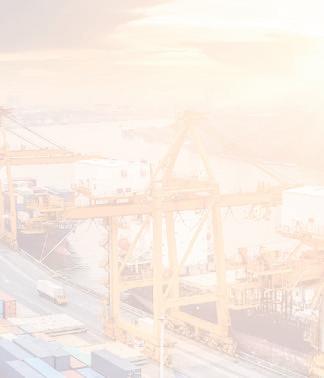













Engage with our


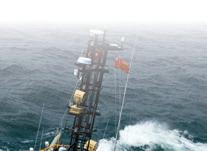










We deliver bespoke marketing packages with quantifiable ROI. Maritime Journal’s valued content focuses on vessel operations and projects, both inshore and offshore, including ports and harbours and is delivered through multiple channels.











Port stakeholders want to see more momentum behind the San Antonio new port Megaproject as a path to fending off new competition. Rob Ward reports

In an unprecedented manoeuvre stake holders in the Chilean port of San Antonio are making a direct appeal to the South American country’s president, Gabriel Boric, to speed up the “Puerto Exterior [Outerport] Megaproject” that will transform the port’s current capacity, of 1.6m TEU per annum, up to 6m TEU, at a cost of around US$4BN, up from the US$3.5BN that was estimated three years ago.
The “Megaproject”- which will include two new piers, each 1730m long - has been a long time in the making and shippers and port users in San Antonio and its hinterland – which includes the country’s capital Santiago de Chile, some 75 miles and 90 minutes away up the mountain side – are getting fed up with seeing their logistics and business plans emasculated by the lack of infrastructure in San Antonio.
Leading the charge to quicken the process is Juan Armando Vicuña, President of the Cámara Chilena de la Construcción, (or Chilean Chamber for Construction) who button-holed Boric during an industry gathering last month and pushed home the point, backed up by the entire ports sector, that Chile needs to act immediately if it is to preserve the number of direct international liner calls it receives today
(predominantly to San Antonio), rather than be relegated to the status of a pure transshipment country.
This is particularly relevant because lurking on the horizon, and forming a serious threat to the Chilean ports scene, is the imminent opening of the Peruvian port of Chancay which, together with impressive expansion plans at the two terminals handling containers in nearby Callao (DP World Callao and APMT Callao), will very likely form a Hub Cluster that will serve the entire West Coast of South America (WCSA). Chancay has been the dream, for many years, of Chinese giants Cosco Shipping and the US$3.6BN project is set to begin operations this November. Port Strategy readers are already aware (see last edition) that the commercial departments of both APMT Callao and DP World Callao have been targeting transshipment cargoes from Chile for more than a year now, to the detriment of several Chilean ports, including Valparaiso, Iquique and Antofagasta as well as San Antonio.
“Building the extension in San Antonio is a fundamental step to promote international trade and export activity, which is
Did you miss it?
Over thirty eight expert speakers from world leading companies and organisations Papers, Presentations plus Video Content. Now available to purchase for USD 285.00

Highlights include Keynote Panel discussion on the collaboration necessary between ports and shipping to meet IMO targets.
Expert speakers:
• Er Tham Wai Wah, Chief Sustainability Officer of MPA, Singapore
• Dr Sanjay C Kuttan, Chief Strategy Officer for Global Centre for Maritime Decarbonisation
• Lars Robert Pedersen, Deputy Secretary General of BIMCO
• Antonis Michail, Technical Director for International Association of Ports and Harbors
• Eva Liu, Head of Shipment Product for Oceania Market, Maersk
Sessions include:
• Green Finance solutions
• Onshore Power supply update
• Alternative fuels - progress and bunkering
• Green Corridors – recent developments
• New Green Technologies
• Latest on Maritime Digitisation
• Collaborative Projects insights
If you would like more information about conference downloads or any of our upcoming conferences, don’t hesitate to contact the conference team on +44 1329 825335 or email congress@greenport.com



Lurking on the horizon, and forming a serious threat to the Chilean ports scene, is the imminent opening of the Peruvian port of Chancay
why, with the Regional Chamber of Valparaíso [which includes the ports of Valparaiso and San Antonio], we consider it a priority to accelerate the construction of the Outer Port of San Antonio. The country urgently needs it,” argues the national president of the CCC. He calls for President Boric to declare the “Puerto Exterior Megaproject” a special “Presidential Priority” and to help San Antonio obtain the Environmental Qualification Resolution, necessary to move the project forward.
Simon Mackenzie, President of Asonave, the Chilean Shipagents Association, told Port Strategy that his organisation, has also been lobbying the government for improvements in infrastructure but feels that Boric and his ministers have other priorities.
“The CCC is worried about the slowdown in public works because the government is showing little enthusiasm in transport investment,” states Mackenzie. “Boric’s Socialist government is just not Pro-Investment as it is more focused on Social Matters and this is holding back port expansion projects, in Valparaiso as well as San Antonio.”
He points out that the “Green and Environmental Lobby” is also responsible for the delays in San Antonio, and an ailing Chilean economy did not help either, in that there was less money available for investments. STI and DP World San Antonio, the two operators in the port, have both suffered reductions in container numbers post Covid, although both are sailing very close to terminal capacities.
“These environmental studies have been ongoing for nearly five years now with very little progress and so the ports and shipping community in Chile is very worried about Chancay as we may eventually become just a feeder destination,” adds the veteran executive.
Boric’s “political” responses to the lobbying overtures are as follows:
“The Outer Port of San Antonio is moving forward with an advisory council to promote its management,” said Chile’s President. “Also there needs to be an agreement between the community, the port company and the authorities so that some areas in the Ojos de Mar [the planned area for the port expansion] are considered an urban wetland and that this does not prevent the creation or expansion of the Outer Port. The tremendous challenge that we have in Chile is to reconcile development and construction with the protection of the environment.”
Boric, at just 38, one of the youngest leaders of any country in the world, says his government is developing a National Port Policy, and he also suggests that the Chilean, Latin American and international “banks” might want to lend a hand in providing funding for the key project, as well as Santiago.
However, despite all the delays and pessimism Eduardo Abedrapo, President of the Empresa Portuaria San Antonio (EPSA, the port authroity for San Antonio) says that a new timetable has been set for the all-important new breakwater and the initial works will begin during the second half of 2025, along with capital dredging. He notes that 55 technical studies have been carried out and that the tender documents will be released once the Environmental Licenses are granted and the winners of the overall project, which is expected to take 10 years to complete, will be announced.
“We invited Chilean and foreign companies to declare an interest in the project and we had 70 European executives turn up,” the EPSA president told local journalists. Apparently, most of these were from Spain.
It is understood that EPSA can fund the breakwater from its own funds, without recourse to government funding.
One veteran port consultant, based in Santiago, notes that although the Chilean governments, both local and federal, have been guilty of various “political showboating” and delays have occurred since the Presidential days of Michelle Bachelet (2006-10 and 2014-18) the machinations of shipping lines and port operators in the “Callao and Chancay Cluster” are “to a large degree outside the sphere of influence of Chilean players,” and they are free to turn that entrepot into a ‘Hub for the WCSA. “However, having said that, the very fact that Santiago has a sizeable population of more than seven million means that taking out direct calls to San Antonio might not be an ideal logistical solution, especially with National Pride at stake,” he concludes.
While the delays for expansion of the port of San Antonio continue, San Antonio International SA (STI, a SAAM subsidiary, and one of two box operators) is adding more capacity as best it can.
In January of this year it installed two new Ship to Shore Super Post Panamax cranes, replacing the Paceco models that had operated there for the past 25 years, and bringing its capacity up to 1.6m TEU/yr, a 27% increase on the previous maximum. In addition, Rodrigo Galleguillos, General Manager, STI notes that over the past year, it has added two more Rubber Tyred Gantries (RTGs), 19 reach-stackers and a fleet of terminal tractors. Overall investment during this phase is in the order of US$66m.
In 2023 STI handled 1.014m TEU, which was a decrease of 7.25%, compared to the 1.093m TEU handled in 2022, and more than 17.7% less than the 1.233m TEU throughput of 2021. The good news is that first four months of this year have started impressively with 393,366TEU handled, up 30% compared to same period of 2023.
San Antonio as a whole, including the multipurpose DP World terminal, handled 1.58m TEU in 2023, which was down by 6.4% compared to 2022, and down 7.7% in relation to 2019, when it handled 1.7m TEU. The 2023 figure was still sufficient to see San Antonio ranked ninth in all Latin America, although it was ranked 7th five years ago.
Valparaiso, which used to be the No.1 box port in Chile, handled just 785,000TEU last year, and that’s a reduction of 13.2% from the 905,000TEU throughput of 2019.
“The arrival of the new STSs means we can now handle two Neo Post Panamax vessels simultaneously, the first terminal in the country to do so,” underlines Galleguillos. He adds that STI has also planned for the new fruit export season by spending an additional US$15m on 27 new reefer towers. STI already has 2,700 reefer plugs in situ.
In August 2023 Hapag Lloyd acquired 50% of STI. Stevedoring Services of America (SSA) owns the other 50%.


The combined efforts of the Nigerian Ports Authority and ICTSI’s Nigerian subsidiary, Onne Multipurpose Terminal, are breathing new life into the Onne Port Complex. Mike Mundy reports
Onne Multipurpose Terminal (OMT), operated by International Container Terminal Services Inc. (ICTSI), recently handled Pacific International Lines 6600TEU containership Kota Cempaka. Handling a ship of this size is a first for the Onne port complex and represents the positive outcome of dredging work implemented by the Nigerian Ports Authority (NPA) and the gearing of the terminal by ICTSI to handle vessels of this size and capacity. The Kota Cempaka has an LOA of 300m and beam of 40m. While in Onne, approximately 2000 containers were loaded and discharged to/from the vessel.
The ability of OMT to handle vessels of this size offers economies of scale to Nigerian importers and exporters and represents a proactive move by the NPA to accommodate the desire of key container lines to upscale vessels used in conjunction with Nigerian liner trades.
Hans-Ole Madsen, Senior Vice President, ICTSI, EMEA, speaking on the occasion of the vessel call said. “This is a game changing event which offers diverse benefits to cargo owners and the logistics community. We are proud of partnering with the NPA & PIL to deliver the inherent advantages of high-capacity vessel operations and we thank NPA for its vision and the efficient implementation of capital and ongoing maintenance dredging, Providing access to vessels of this class is an important component of building and operating a modern and efficient supply chain.”
OMT represents a win: win, for the logistics sector and most importantly for Nigerian cargo owners ‘‘
OMT is a state-of-the-art multipurpose terminal, offering a significant container handling capacity. The terminal possesses 750 metres of deep-water berths offering a draught alongside of 12m. Handling power on the quay is provided by two Gottwald Model 7 mobile cranes with support equipment in the 22-hectare yard area comprising 15 terminal tractors, seven reach stackers, three empty container handlers and 125 reefer plugs. The terminal is powered by an in-house power station and utilises the latest IT systems from the Navis Terminal Operating System and SAP, making it possible to handle all types of cargo.
OMT is located in the Federal Ocean Terminal and is the first port of call at the Onne Port Complex in Rivers State. Onne is well known as a key gateway situated at the centre of Africa’s largest oil-producing region and providing access to major hinterland markets.
OMT’s presence in Onne effectively doubles the modern container handling capacity of Eastern Nigeria and is proving a catalyst to accelerating Onne’s role as a logistics hub as well as serving the region’s extensive oil and gas industries.
OMT welcomed its first vessel, the MSC Floriana, on 2 May, 2021.

Since this time the terminal has progressively built its container throughput with the arrival of the Kota Cempaka marking a significant milestone in this respect.
“With the support of the Nigerian Ports Authority, the close cooperation with PIL and the hard work of our employees we are opening the door on a new era for Onne,” says Jacob Gulmann, Manging Director, OMT. “We have proactively met the requirement of container lines to be able to cater for larger size vessels, a development that offers economies of scale to Nigerian importers and exporters. We will continue to develop at pace and have made known our willingness to proactively invest as required by market developments. We are also proud to have built and trained a workforce that has literally placed hundreds of Nigerians in full time employment. Our training processes are ongoing and are continually playing an important part in upskilling the workforce which has the double benefit of building efficiency levels and maximising safety.”
In the latter respect, in mid-2023 OMT registered the major achievement of clocking up two million man hours with zero lost injury time.
OMT has also demonstrated its multipurpose credentials handling non-containerised cargo and notably large size project cargo which presents challenges and requires handling expertise.
OMT, in collaboration with Horatio Ltd., Chairborne Global Services Limited, Kerry Logistics and IO Materials Services, efficiently facilitated the unloading of essential project modules from three vessels on Berth 10 of the Federal Ocean Terminal. The modules were securely stored in OMT’s yard and were later loaded onto barges for transport to Bonny Island.
Overall, OMT, supported by the vision of the NPA, has introduced new competition into Onne in multiple cargo sectors. As Gulmann underlines this represents a win: win, for the logistics sector and most importantly for Nigerian cargo owners.















Click here to read article on Port Strategy online

11 - 13 June 2024
Rotterdam Ahoy Centre






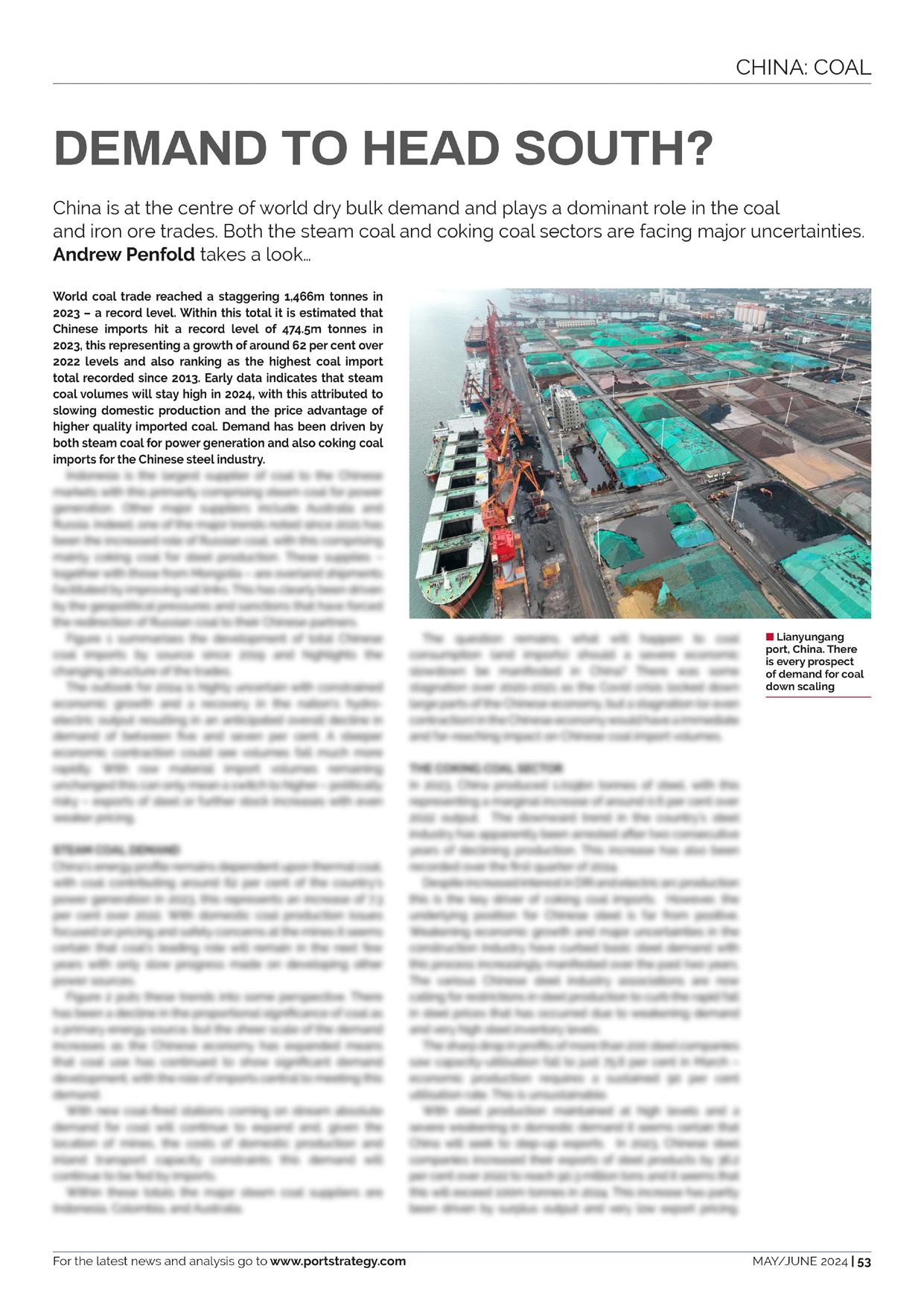
Click here to read article on Port Strategy online





8 – 10 October 2024
Hamburg, Germany
Managing risk - building resilience - unlocking opportunities
2024 will be a pivotal year for ports and their communities. Geopolitical instability is on the rise. Physical and digital security is under threat, at sea and on shore.
Shipowners, supply chain providers and cargo owners must adapt rapidly. The energy transition towards low- and zero-carbon fuels must be balanced against national energy security concerns.
#IAPH2024 will offer attendees insights on these topics, revealing how ports – from developing and developed nations – are building secure and sustainable solutions to these shared challenges, in a deeply interconnected world.
©

Silver sponsors: Bronze sponsors: Gold sponsor: To secure your delegate place or further information on attending/sponsoring contact the events team: visit: worldportsconference.com contact: +44 1329 825335 or email: wpc@mercatormedia.com #IAPH2024

 Copyright of Hamburg Port Authority, Andreas Schmitd-Wiethoff
Host sponsor:
Copyright of Hamburg Port Authority, Andreas Schmitd-Wiethoff
Host sponsor:
This second part review of the Safe Mooring Seminar, organised jointly by TT Club and Port Strategy, focuses on the technical products and systems that are fundamental to safe and efficient mooring
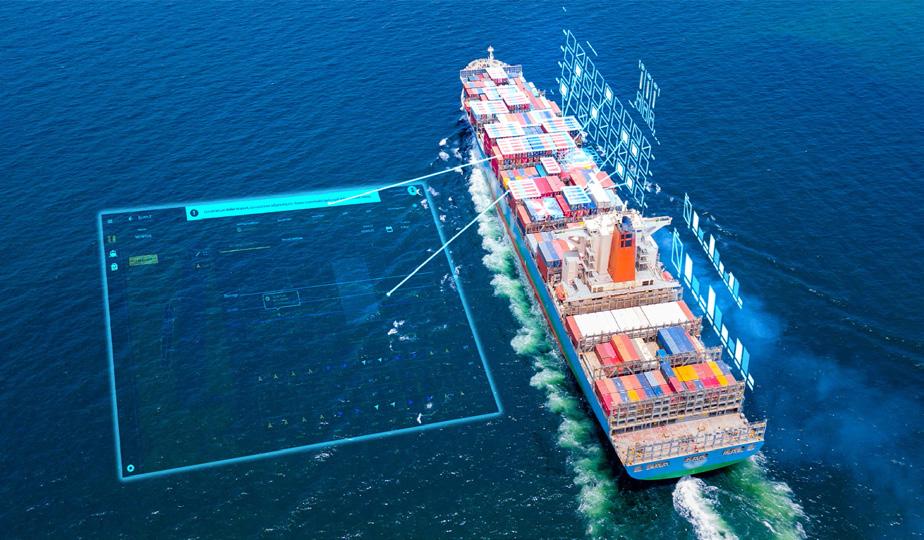
To kick off the technical session there was an interesting presentation on three problem areas by Will Brindley, Lead Naval Architect, Apollo Engineering. These comprised: line failure causes; snapback and offshore energy quayside mooring risks. Key problem areas were identified – by way of example the potential lethal consequences of snapback – a rope tip can travel at 230m per second (515mph) and has the potential to severely deform 50mm scaffold poles. Various scenarios were presented in all three categories and three key factors identified common to implementing effective solutions: sound design, good maintenance and mitigation and protective measures in order to reduce risk.
The next presentation came from Royal HaskoningDHV with the focus on smart mooring – a system that is essentially a software application that actively warns the port operator or ship’s captain of potentially unsafe situations for a moored vessel. Smart Mooring, as the system is called, is able to predict mooring forces and a ship’s motions days in advance “by combining calculations and forecast weather (wind & waves). It delivers actionable insights to decision makers.
BollardScan was next up, the specialist company focusing on the testing of mooring equipment. A revealing insight was provided into bollard failure, the multiple causes of this, and how bollard testing in the field – checks for cracks and grooves, porosity, system capacity, anchor integrity and structural integrity – can maximise safety and efficiency across the board. Further, the company presented case studies where it had identified the incorrect torquing of bollards, incorrect installations, provided advice on the integrity of installations including the feasibility of bollard replacement which in certain cases was not possible as well as general audit work.

Other service capabilities were also discussed by BollardScan including smart bollard and quayside monitoring. This, the company explained, can be done via sensors to monitor deformations, movements and the overall integrity of bollards and quayside structures.
n Royal HaskoningDHV has the ability to provide a digital twin of the shipshore interface which can provide insight into the interaction between ship and shore under a variety of simulated conditions
n RMoorMarine partner with Bollard Scan in nondestructive bollard and quick relase hook testing










The following three presentations focused on new generation mooring systems – Cavotec’s automated Moormaster system, Straatman’s Quick Release Mooring Hooks, Berthing Approach System and Smart Bollards, and Trelleborg’s docking and mooring product lines which included the company’s automated mooring systems. All three companies and their respective product lines have been reviewed previously in Port Strategy, see PS March/ April edition, Berthing System Innovation p44. All the technical presentations were received with great interest and all signalled the positive role that innovative
technology can play in achieving safe and efficient mooring. Several also signposted the expanding role that digital and other modern era technology can play in optimising the berthing process.
The Safe Mooring Seminar was generally seen as a successful event by the attendees. It was seen to fill an information gap and as such confirmed as an event that it would be useful to repeat as and when further interesting developments emerge. In this respect TT Club and Port Strategy will continue to monitor the sector and assess the feasibility of another seminar.
The recent Safe Mooring Seminar, organised jointly by TT Club and Port Strategy highlighted both the need for, and the desire of a wide range of stakeholders, for collaborative engagement to improve safety when mooring ships. TT’s Mike Yarwood provides an overview of the challenges that exist and the improvements being achieved in this crucial aspect of worker safety.
The need to moor ships has existed since man first took to the water. The evolution of type and size of ships and ports however means that the methods used and equipment available has required constant review and up-grading. Despite this effort sadly accidents are happening all too frequently. The high energy involved during berthing manoeuvres often result in these incidents causing an alarming number of serious injuries and fatalities being recorded each year,
In recent years the trend of vessels getting larger and the effects of climatic change are leading to an increase in a more challenging berthing environment. These circumstances further emphasise the need for consistent and effective communication between all parties. Collaboration is crucial both in planning appropriate operational processes and enforcing best practices tailored to individual port conditions.
Clearly, at the quayside, successful and safe mooring also requires a high degree of communication between the ship and landside operatives. There needs to be a mutual understanding of the individual roles, working procedures and equipment used by both the ship and landside operations. Therefore, it is important to harbour communication between all of those involved, to collaborate on learning, training and in sharing an understanding of improved techniques, and to support innovation.
There have been some fantastic steps made to improve mooring equipment in particular bollards, lines and shipside equipment. Likewise, advancement has been made in techniques to manage the equipment more effectively. Software developments create a better understanding of the forces at play during mooring in real time. All these initiatives provide aids and tools to increase safety but the need for continual improvement remains evident.
TT will continue to support and promote such improvement and innovation through encouraging and enabling collaboration between ports, shipside, landside operators, technical innovators and insurers. We were delighted by the engagement of a diverse range of stakeholders to address safety issues during the Safe Mooring Seminar. This not only underlined the benefits of such events but also the willingness of those taking part to strive for improved safety standards.

Reduced handling costs, shorter turnaround times, reliability and flexibility: Nemag grabs give dry bulk terminals throughout the world that competitive edge they need in today’s demanding market.
Driven to achieve the best performance, we closely listen to our clients’ needs. For a hundred years, Nemag’s innovative grabs make it possible to realize the highest productivity at the lowest costs.
Explore our comprehensive range of high-quality grabs and discover the power of great bulk handling.
From coal and iron ore to wheat, scrap metals, minerals and clinker: Nemag has the optimal solution for every dry bulk flow!
Contact us find out how we can take your bulk handling to the next level.


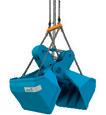




Click here to read article on Port Strategy online


Join us in November
Empire Riverside Hotel
Powering shipping’s emissions-cutting ambitions
Providing senior executives with a meeting place to learn, discuss and share knowledge of the latest developments in efficient propulsion technology and low flashpoint, low carbon fuels.
EU 2030 Regulatory Requirements and the Emerging Market for Carbon Storage and Capture: Challenges and Opportunities
Sponsored by:

Methanol: Lessons learned from the expansion of vessels operating on methanol
Ammonia: Challenges and solutions (fuel supply, after treatment, new engines, pollution control, fuel tanks)
Bio-Fuels: Operational experience for 2-stroke and 4-stroke engines
Lubricants: what the introduction of new base oils and additive packages into the maritime market will mean for lubricant suppliers, as well as alternative fuel considerations lubricant suppliers
Carbon Capture: emission reduction, findings, and new projects
Hydrogen: ICE, and fuel cell advances
LNG: Methane slip reductions, advances in engine performance
Other energy efficiency applications

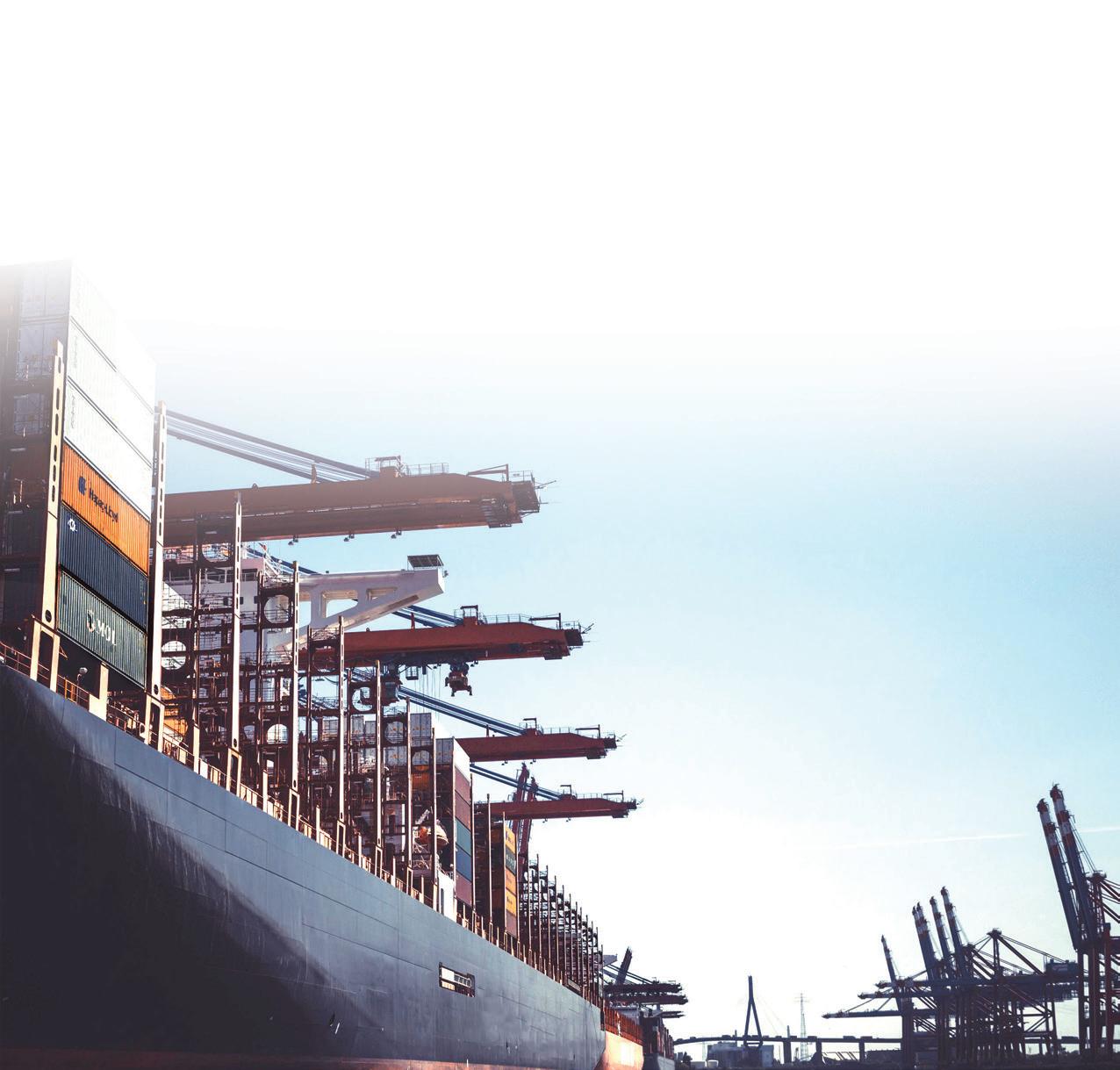



Propulsion & Future Fuels is the longest-running technical conference in the maritime sector, providing senior executives with a meeting place to learn, discuss, and share knowledge of the latest developments in efficient propulsion technology and low flashpoint, low carbon fuels.
Visit: motorship.com/propulsion-and-future-fuels-conference
Contact: +44 1329 825335
Email: conferences@propulsionconference.com

Click here to read article on Port Strategy online

Other major suppliers include Australia and Russia. e of Russian coal, together with those by improving rail links. This has clearly been sanctions that have forced the redirection of
There are still obstacles to overcome but the take-up of onshore power supply is rapidly gaining momentum supported by an innovative system supplier sector
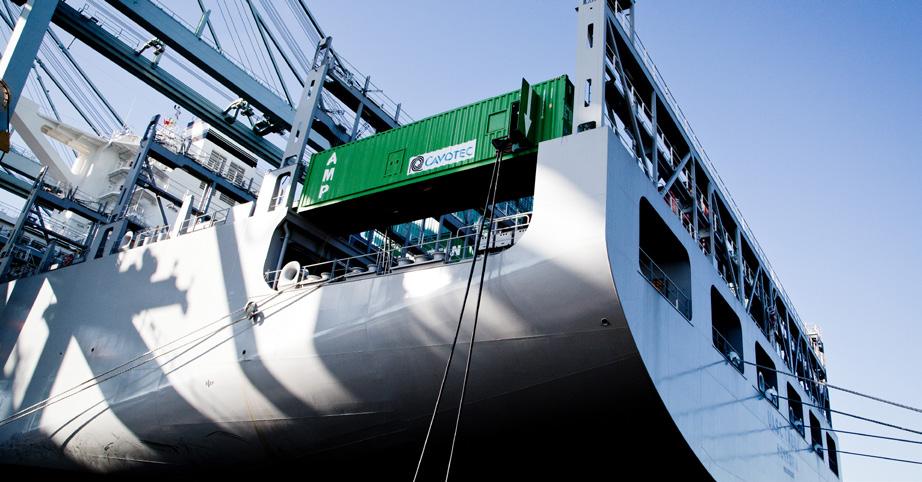
The use of shore power in ports has rapidly gained momentum, but challenges to overcome include global standardisation and investment. While the IEC 80005 standard, established in 2012, is key, there is a need for more globally standardised practices to enable compatibility across ports and vessels.
Strategy for Shore Power in the Port of Rotterdam, this report highlights standardisation as a concern for complex shipping segments - such as liquid bulk and transshipment – where transition to shore power is more difficult and therefore in need of regularisation.
The report says: “International collaboration and the establishment of a policy for standardisation are crucially important for developments in this area.”
But progress is being made, as the report notes the Port of Rotterdam is focusing on working with
international partners to establish international technical standards.
Elsewhere Reducing Emissions from Shipping in Ports; Examining the Barriers to Shore Power a report by the British Ports Association (BPA) underlines that the primary barrier to adoption is capital cost. “A green maritime fund to support shore power in the UK is clearly needed to help meet prohibitive costs, particularly around energy networks and generation,” emphasises the BPA.
Regulation is also important - Europe is ahead of other areas, driven by regulation that states all main European Union ports must install shoreside electricity by 2030.
While, however, there are hurdles to overcome, the below shore power system supplier news highlights how progress is ongoing, with new projects, technical innovation, investments and overall solutions.
ABB: Switzerland-headquartered ABB has recently won a clutch of contracts that extend the use of its shore power connections. The company will supply Portsmouth International Port, UK with a shore connection solution for ferries and cruise ships. Part of the UK port’s Sea Change project to design, build and operate a shore power system across its three busiest berths, the installation will serve two ferry berths – each with five connection points – and an additional berth shared by ferries and cruise ships. The system is due for installation in the fourth quarter of 2024 and expected to be operational by the second quarter of 2025. ABB’s full scope of supply for the shore connection system
comprises a 16-MVA ACS6080 drive with shunt filter, MV switchgear, power-factor compensation, transformers, e-houses, cable management systems, and automation. Also notable, in March it was announced that ABB will install shore power to connect to DEME vessels calling at their base in Vlissingen’s (Netherlands) by the end of 2024. In December 2023 ABB introduced its CO2e Calculator to boost transparency of vessel operation emissions. For shore power connections, the tool calculates the estimated reduction in emissions that can be achieved by drawing from the shoreside utility grid instead of generating electric power using onboard generators.
n Cavotec has inked a US$5 million shore power order with a shipping company that includes a large number of its PowerFit shore power units
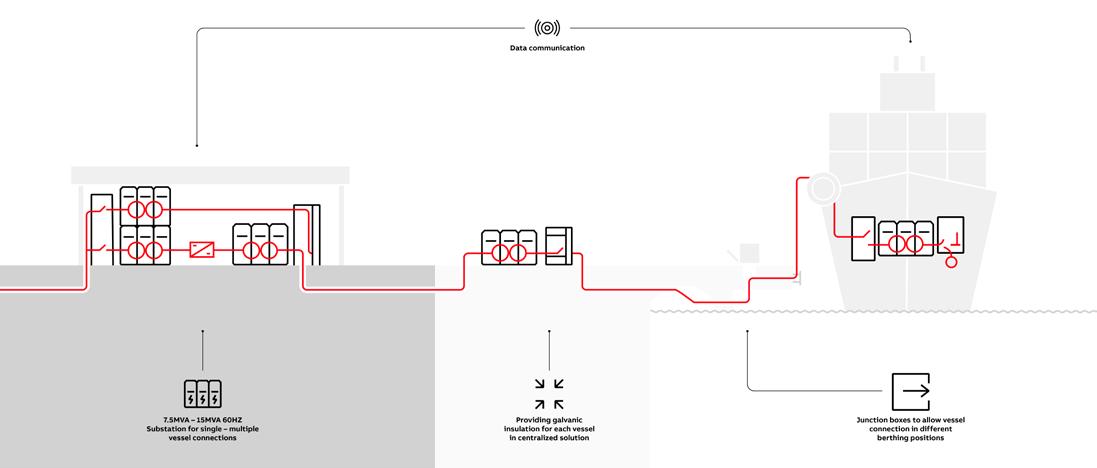
Actemium Nederland: Dutch company Actemium Nederland has provided an on shore power (OPS) installation for Rotterdam Shore Power, a joint venture between energy company Eneco and the Port of Rotterdam Authority. The shore power installation was commissioned for DFDS JinLing ro ro vessels servicing a route to and from Immingham. Located at the DFDS terminal in Vlaardingen, the shore
Blueday Technology: Provider of marine shore power and charging systems Blueday Technology has recently scooped contracts for the installation of its BluEco Shore Power system. It is being installed – as part of a turnkey contract awarded to Blueday - at the Port of Stavanger’s terminal in Risavika (Norway) and is scheduled to be completed this year. Additionally, in May last year the Norwegian headquartered company announced that it had been
Cavotec: Switzerland-headquartered Cavotec has recently clinched several deals extending the reach of its shore power solutions. In April this year it revealed that it had signed a US$5 million shore power order with a global shipping company. The order includes a substantial number of PowerFit shore power units, with deliveries scheduled later this year. Cavotec’s PowerFit units offer containerised solutions for high voltage vessel connections and include all equipment for a high voltage shore connection, from its PowerAMPReel onboard cable management system, a high voltage switchboard, control panel to high/low voltage transformer and other auxiliary systems. Cavotec has also recently signed a two-year service agreement with APM Terminals at the Port of Tanger Med for all its MoorMaster NxG units and shore power solution Power Units at the port. Cavotec has so far installed seventeen Power Units
Fjuel: Fjuel’s Shore Power Connect enables collection, analysis, and storage of crucial data from shore power installations and offers a total system integration that combines shore power units from different suppliers into one complete control system. The company added a new payment solution last year that is designed to reduce the risk of price fluctuations and ensure stability. The solution means that ports now can charge different prices for load levels used by vessels, keeping expenses under control. The billing process is automatic, and the solution integrates with different ERPs or billing IT-systems, simplifying income and
power facility consists of a converted 40-foot container containing electrical equipment that makes electricity from the public power grid suitable for use onboard the vessels. The shore power installation has a capacity of 1.8 MW and is expected to provide 3.5 GWh per year of electricity. Actemium provides flexible, containerised, moveable or static building shore power systems.
selected by Fjuel AS for a turnkey contract including its BluEco Shore Power system for both low and high voltage to the Port of Tromsø. This is slated to be finished by the second half of this year. Its system has also been selected by Fjord Base to be installed at two of their terminals in Florø, Norway. BluEco Shore Power system allows ships to be powered up with energy from onshore via a flexible cable management system.
at the port. By the completion of the third phase in Q1 2024, the amount of Power units is expected to increase to 31. Elsewhere, Cavotec has enabled Europe’s first shore power connection for a tanker vessel. The Swedish port of Gävle connected a tanker to a shoreside electricity system, provided by Cavotec and based on new standards drawn up in co-operation with other ports and operators. Cavotec says this is “set to pave the way for tanker berth operators to reduce emissions and accelerate progress towards decarbonised maritime and energy supply chains”. The test sequence, during which no electrical current was supplied to the Tern Fors vessel, was conducted last year. Following the trial, operator Tarntank and the Port of Gävle said they now planned to use the system to connect the Tern Fors to an electrical current.
expense tracking. The solution creates data insights as it gathers information from shore power facilities, allowing ports and terminals to access information including consumption details, power loads and spot prices. The solution also allows pricing of different power load levels. Fjuel says: “By power load price differentiation, we push shipping companies to optimise their power demand, helping companies to save money, while ports can reduce their grid charges as well.” Norwegian startup Fjuel is owned by Trondheim Harbour, Bodø Harbour, Tromsø Harbour, Bodø Energi AS and Troms kraft AS.
n ABB’s shore connection and charging solution enables container ships to be fully electric in ports
Date for your diary in 2024
Join the world’s leading conference on balancing environmental challenges with economic demands

Meet and network with over 200 attendees representing port authorities, terminal operators and shipping lines. For more information on attending, sponsoring or speaking, contact the events team: visit: greenport.com/congress tel: +44 1329 825 335 email: congress@greenport.com
Igus: Germany’s motion plastics specialist Igus’ mobile shore power source readychain® iMSPO (Igus Mobile Shore Power Outlet) is a self-propelled socket for the shore power connection of container strips. The Port of Hamburg has installed iMSPO to solve what Igus says is the ‘connection dilemma’. The company explains that there is no fixed place where the vessel can be “plugged in” in container terminals as there are constantly changing ships of different sizes and
Nidec ASI: Nidec ASI, part of the Motion & Energy Division of Nidec Group, together with partners ICOP and Step Impianti was chosen by the Port Authority of the Eastern Adriatic Sea for the electrification projects of docks IV, V, VI in Monfalcone
PowerCon: The Port of Barcelona’s first on shore power supply for container ships has arrived at its BEST terminal. The OPS substation comprises six modules assembled in Denmark by PowerCon, which was awarded the contract to install the system in turnkey format and will allow up to two container ships to be connected simultaneously. The aim is to start supplying ships with clean energy certified as 100%
SAMPOL Ingeniería y Obras S.A: Mallorca-founded engineering company Sampol has won a contract for the electrical connection to ships in the Port of Valencia’s Transversal de Costa-MSC dock. Expected to take 57 months, the project will provide two supply points with respective cable management systems. Each supply point will be capable of providing electricity to a ship of up to 7.5 MVA. However, if there are two ships simultaneously docked and
SP Mobility: The Maritime and Port Authority of Singapore (MPA) launched its first pilot trial for an electric harbour craft (e-HC) charging point in April this year. The charging point at Marine South Pier was awarded to a partnership between Singapore headquartered SP Mobility, Pyxis Energy and Pyxis Maritime. Under this pilot, the partnership has deployed a 150-kilowatt (kW) land-based Direct Current fast charger with a Combined Charging System 2 connector at MSP. MPA explains that the charger can charge an e-HC with an approximate battery capacity of 500 kWh in around three
berthing positions. The iMSPO system solves this problem as the combination of igus’ roller e-chain and chainflex® medium-voltage cables enable the system to travel within a range of up to 400 metres (which corresponds to the length of the largest container ships). The mobile socket is moved along the quay to exactly where the ship’s connection point is located and the ship cables are lowered and connected to the movable socket. The iMSPO is operated with remote control.
Port. The system planned for the docks will be able to supply power of 4 MVA at 11 kV distributed in two different connection points (2MVA each). Monfalcone is the ninth European dock electrification project to be awarded to Nidec ASI.
renewable as of July. Lluís Salvadó, President, Port of Barcelona, says that this is the “first system of this type in southern Europe”. PowerCon integrates its main components into standard shipping containers, enabling it to premanufacture, pre-assemble, and pre-test solutions before they are shipped to on-site, where the containers also ensure easy and fast installation.
demanding electricity, up to 5MVA will be supplied to each of them simultaneously. To meet this power demand, an on shore power substation will be installed at the Transversal de Costa dock. Sampol says that this “constitutes the heart of the system”. This project comes on the back of work by Sampol including the installation of electrical supply to ferries at the Paraires dock in the Port of Palma and to ships in the Muelle Grande in the Port of Las Palmas.
hours and enable an operating range of about 50 nautical miles, or about 90 km. Users of the e-HC charger will need to scan a QR code using the SP app and make the payment via the app, similar to users of electric vehicles. Dean Cher, Head (Mobility), Sustainable Energy Solutions, SP Group, notes, “This very first public marine charging point at Marina South Pier is a small but important step in providing the marine industry with decarbonisation options and our partnership with Pyxis will lead the way to wider e-HC adoption in Singapore.”

n May 2024, CMA CGM’s Vasco de Gama became the first containership to be regularly supplied with shore power at Container Terminal Hamburg (CTH)

Marine Civils is co-located with Seawork
Marine Civils in association with Seawork, Europe’s leading commercial marine event. Dedicated to showcasing the latest equipment and solutions for marine, coastal and other challenging civil engineering projects with unique landscape features.
Reach a larger audience than ever before
Reserve now for 2024 and make the most of year round marketing support from Marine Civils, Seawork and our leading commercial marine magazines. In print, online, eNews and social media channels.
Marine Civils attracts representatives from:
• Civil engineering
• UK port authorities
• Energy companies
• Conservation organisations, amongst others
With a big overlap in content and business for companies involved in marine construction, the event is uniquely positioned to provide invaluable opportunities to access wider relevant audiences via Seawork and Maritime Journal.

For more information visit: seawork.com
contact: +44 1329 825335 or email: info@seawork.com



The objective of optimising operations is driving terminal investment in reefer monitoring systems. This is tapping into an industry wide trend for terminals to invest in visualising as much of their operations as possible. “They want big data lakes gathered in all their operations as they want to apply data science, AI and algorithms to obtain new KPIs and optimise operations,” explains Jordi Asensio, Reefer Runner Product Manager, Identec Solutions. In order to do this, he says that it is imperative to have automated reefer monitoring systems that extract the data at the rate that
terminals demand. Consequently, there is a push for reefer monitoring solutions to have a high acquisition rate, so that data lakes can be populated and data science can be applied. Identec Solutions is in talks with different companies to adapt its interfaces to populate terminals’ data lakes, not only for reefer monitoring but also for regular container operations in the yard. This trend is delivering new opportunities and innovations for transparency and efficiency, as demonstrated by the company reviews below which highlight the latest activities of system suppliers.
Carrier Transicold: This US headquartered company has launched its BluEdge Partner Program – a new global reseller partner channel providing distribution of its refrigerated container telematics products and services. Through the reseller channel, Carrier Transicold will establish a global network of BluEdge Partners, expanding its capacity and distribution reach. The channel is authorised to sell, install and commission its latest telematics technologies, including Carrier’s Lynx™ digital platform which offers end-to-end supply chain visibility, real-time monitoring, actionable insights and analytics, and improved sustainability for the refrigerated container segment. BluEdge Partners will be appointed to service customers and potential prospects from terminal operators and
shipping lines with Carrier’s telematics solutions. “The launch of our BluEdge Partner Program represents a key milestone in Carrier Transicold’s foray into the refrigerated container aftermarket telematics space,” said Tan Bor Yow, Senior Channel Manager, BluEdge, Global Container Refrigeration, Carrier Transicold. “Every touchpoint along the cold chain will benefit from Carrier’s telematics offerings, as they will have immediate operational expenditure reductions, enhanced asset visibility and improved safety operating environments.” Carrier Transicold helps improve transport of temperature-controlled cargoes with a complete line of equipment and services for refrigerated transport and cold chain visibility. It is part of Carrier Global Corporation, a global provider of cold chain solutions.
n Remote reefer monitoring and taking advantage of new opportunities in conjunction with system supply is a key area of investment in pursuit of optimised operations








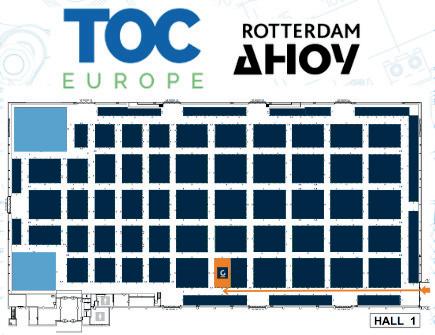

Copeland: Copeland and reefer container manufacturing company Maersk Container Industry (MCI) announced in December last year that they are collaborating to integrate Copeland’s REFCON 6 BLE reefer monitoring system with MCI’s Star Cool reefer containers fitted with Sekstant gateways. A statement explains that this collaboration helps “aggregate multiple IoT provider datasets to improve cold chain visibility in the marine shipping industry”. Anders Gamborg Holm, Director Global Sales & Service, MCI, says:
Identec Solutions: Last year Identec Solutions launched Reefer Runner 5G, to remove the need for local infrastructure by using cellular 5G band network with an SAAS cloud portal. “We are targeting small depots or container terminals with very low volumes of reefers that won’t justify the investment to install infrastructure, but which still need occasional reefer monitoring,” explains Jordi Asensio, Reefer Runner Product Manager, Identec Solutions. The company is also targeting mobile reefers in trucks, barges and trains. The 5G devices are already being used in Netherlands-headquartered C sense’s 24/7 reefer monitoring platform and a regular Reefer Runner 5G service with Danser Switzerland has started operating on the River Rhine from Basel to Antwerp/Rotterdam and back. Identec Solutions has also signed a purchase order with a German container terminal for its 5G solution for one of its depots where reefers are considered as hazardous cargo and have special requirements for monitoring. Looking ahead, Identec Solutions plans to improve its energy monitoring algorithms to be able to enable more energy savings and management for terminals and vessels. While the company is still in its initial development phase in this regard, it is pitching to some potential customers and expects to launch something by the end of this year or early in 2025. Jordi Asensio explains that the idea is to incorporate a ‘smart switch’ in its outlet
Orbcomm: In the last few years Orbcomm has launched a number of new developments, including a dry container tracking sensor last year, and previously, a next generation IoT solution for refrigerated container operations. Its CT 3500 IoT telematics device features enhanced functionality, analytics capabilities, connectivity options and interoperability with third-party telematics devices. Orbcomm’s solution provides customers with remote, two-way control of reefers to monitor critical parameters and take any corrective action needed. Customers can set customisable alerts that notify excursions to specified reefer temperature, humidity and controlled atmosphere levels, equipment malfunctions, route deviations
Refrigerated Transport Electronics (RTE): US headquartered RTE has introduced BEACON, which it calls an “entirely new approach to automated work order processing”. Unveiled this year, the solution delivers greater efficiency in managing the plugging and unplugging processes of reefers. On-site personnel can observe and respond to updated reefer conditions anywhere in the yard through a colour-coded visual alert system that helps mitigate potential risks and issues associated with plug-in and unplug processes. These include delayed connections to electrical power; reefers being moved while still connected and lagging response times to active reefer alarms. BEACON translates TOS-generated lists into visual cues at each reefer point, providing comparisons between the expected reefer connection status and its actual state. RTE automates the managing of the plugging and unplugging of reefer containers, manages manual inspections, improves efficiency and expected outcomes
“Copeland’s advanced onboard container monitoring technology communicating via Sekstant gateways will help minimise potential downtime and improve refrigerated cargo protection throughout the ocean voyage.” USheadquartered Copeland’s REFCON 6 automatically monitors an entire vessel or container terminal. Two-way communication between an operator and every reefer container can take place 24/7, and all data is logged for event history and documentation purposes.

that will provide energy measurements and accurate consumption estimates, as well as to detect when energy consumption patterns are different to what is expected so that predictive maintenance can be applied. Identec is additionally researching whether it is possible to deploy peak shaving by using algorithms to decide when to switch energy on and off. Asensio says: “We have extensive data as we have had our energy monitoring algorithm for a few years and now we are applying data science to get results.” The company’s core reefer monitoring solution Reefer Runner is a scalable monitoring and management system.
and unauthorised door opening, helping to ensure cargo quality and compliance, and mitigate costly claims. The device integrates with Orbcomm’s ReeferConnect and VesselConnect platforms to show real-time reefer location, status, alerts and other critical data insights through a single view. Orbcomm states that it can be installed quickly, either permanently or temporarily to monitor guest reefers and single trips at a port, yard or vessel. In addition, customers have access to an app to simplify installation, troubleshooting and provisioning of the device and additional sensors. US headquartered Orbcomm offers a wide range of asset monitoring and control solutions.
n Identec Solutions’ Reefer Runner 5G bypasses local infrastructure by deploying cellular 5G band network together with an SAAS cloud portal – it is versatile in its areas of application
and provides a secondary means for identifying reefer alarms, ensuring faster response times. BEACON is accessed through RTE’s GRASP centralised portal, which holds all reefer activities and functions.
n An illustration of RTE’s BEACON visual alert system, which delivers greater efficiency in managing the plugging and unplugging processes of reefers

More stringent government security measures at borders and a greater focus on the illicit trafficking of goods, such as weapons and drugs, are among the factors behind the increased usage of container X-Ray systems at ports.
The global cargo container X-Ray inspection systems market size is forecast to grow from US$1.78 billion in 2024 to US$2.98 billion by 2032, at a CAGR of 6.6%, according to Fortune Business Insights’ Global Cargo Container X-ray Inspection Systems Market report. These figures combine the application of these systems at seaports, airports and border crossings/roadways, but the report underlines that the seaports segment will “lead the market” due to the rising demand for port
security infrastructure. Underpinning this demand is the ability of such systems to boost security measures, prevent illegal activities and ensuring compliance with trade regulations.
Container X-Ray systems are rapidly developing when it comes to deploying innovative technology and data, as our company profiles below highlight. Fortune Business Insights’ report says: “In recent years, new X-ray inspection systems have been introduced to the market, and they have advanced features such as automatic detection algorithms, multi-energy imaging, and artificial intelligence, improving detection accuracy and efficiency.” There is also a move towards machine learning, which further enhances the accuracy of X-Ray systems.
Astrophysics: Astrophysics has unveiled its next generation of X-Ray technology as well as artificial intelligence software (AI). It has developed its new VI3D™ X-Ray technology to counter the threat of terrorists and extremists constantly improving their methods to avoid detection in existing security scanners. The VI3D offers operators three viewing angles and 3D MotionView™ software with a “rocking” image display. It uses Astrophysics’ Enhanced Imaging™ (EI) software and a 23” touchscreen monitor. “For operators at critical infrastructure, aviation, and ports and border sites, this technology results in higher throughput, lower false alarm
rates and heightened threat detection,” the US headquartered company says. It has also introduced Astrophysics AI, a fully-integrated AI software available for X-Ray scanners. The company says: “Astrophysics AI software’s deep-learning algorithms effectively model the synapses of the human brain. This allows it to analyse images, extract objects’ characteristics, and create models that help the software identify entire classes of objects (e.g. guns, knives). The AI’s threat detection continuously improves as it analyses more and more images, resulting in an ever-expanding catalogue of threats it can readily identify along with constantly-improving threat detection
n Westminster’s WG H Container X-Ray Scanning Portal is used to inspect containers for contraband, explosives, weapons and the verification of manifests
capabilities.” The proprietary software identifies dangerous objects hidden within scanned images, even if those objects are rotated, vary in size or are partially obscured. Once a threat is identified, the software highlights its location in a box and alerts nearby screening personnel to conduct a physical inspection. Astrophysics says that one of
Nuctech: Nuctech scanners operate in ports and land borders to fight against smuggling and drug trafficking. China-headquartered Nuctech’s range of container inspection products cover fixed, relocatable, mobile and rapid scan systems. It singles out its Intelligent Image Recognition System which it is continually developing by optimising the AI algorithm and improving its accuracy to ensure customs clearance services are “fast, accurate and efficient”. The Intelligent Image Recognition System can compare and analyse the scanned-images of cargo and
NOSI Systems: US-headquartered OSI Systems’ security division has won a contract valued at approximately US$5 million from a Latin American customer to provide port security solutions, including installation and integration support. Among the solutions to be provided are the Eagle® P60 high-energy, drive-through cargo and vehicle inspection system, Z Portal® high-throughput, drivethrough inspection system, and the VM500 drive-through radiation monitoring portal. Deepak Chopra, Chairman and
Smiths Detection: UK threat detection and screening technology company Smiths Detection has launched a range of recent initiatives and developments. In January it announced that it had been selected to take part in an EU Horizon programme to develop a maritime customs border control screening system (METEOR) to deliver portable screening technology for cross border containers. The METEOR consortium will deliver a vapour based portable scanner for the non-intrusive inspection of large-volume shipments. The new technology will automatically provide fast high-quality detection and identification, with a low false alarm rate, without needing to open the container. The consortium will initially focus on the detection of narcotics, with the view that the technology can also be applied to the detection of other known threats such as explosives. It is also collaborating with See True, the supplier of artificial intelligence threat detection software, to integrate its threat
VMI Security: Among its suite of systems for the port and customs sector, Brazil-headquartered VMI Security offers the Spectrum Cargo system, a high energy scanner for trucks and containers. It includes a video monitoring kit with X-Ray camera, four-unit image viewing station with network connection and a high penetration function, marking of suspicious images and data analysis report. Images can be exported to an encrypted viewing application developed by VMI. There is an automatic material discrimination software and automatic discrimination of organic, mixed, inorganic and heavy metals by colourisation.
Recent uptake: In 2023 it was announced that the Port of
Westminster Group: The UK-headquartered company provides both container X-Ray screening solutions as well as management and operation of container screening in ports. Westminster Group explains that it can work on a BuildOperate-Transfer (BOT) or Public-Private-Partnership (PPP) scheme with port operators to ensure that container screening operations are running at optimum performance by providing all the required investment, expertise,
the main benefits of this automation is that it eliminates human error. The AI software can be incorporated into existing Astrophysics scanners and has universal compatibility with all standard X-Ray scanners. Astrophysics Inc. designs, builds, and delivers X-Ray scanners for security around the world.
vehicles automatically, and quickly identify contraband such as firearms, knives, drugs, ivory products and high-taxable commodities. Without opening the container, it inspects the contents inside, which enables inspection staff to identify contraband quickly and accurately within seconds. If no contraband is detected, the Intelligent Image Recognition System is able to give permission to release the container automatically, saving time on the inspection procedure duration. Nuctech products are used in more than 170 countries and regions around the world.
CEO, OSI Systems notes: “We are pleased to further our ongoing efforts to enhance global security and proud to offer our leading systems, which are designed to deliver efficient and accurate inspection of cargo and vehicles at port and border crossings.” OSI Systems is a vertically integrated designer and manufacturer of specialised electronic systems and components for critical applications in the homeland security, healthcare, defense, and aerospace industries.
products with Smiths Detection’s X-Ray screening equipment. The move is part of Smiths Detection’s ongoing Ada Initiative that seeks to accelerate the adoption of open architecture (OA) across areas including ports. Hardware, software and algorithms from different product suppliers can be plugged together using OA, enhancing security outcomes. Smiths offers the latest augmented X-Ray technology which it says will help “revolutionise detection by substantially increasing efficiency.” It claims that compared to standard X-Rays, “the vastly superior image quality offered by augmented X-Ray technology means that more data is captured in each scan, which enables operators to get a much clearer picture of where objects are located within cargo and what material they are made of”. For example, images will have a significantly enhanced resolution and almost eight times as many pixels, and as much as 60 times more data can be captured from each scan.
Ponta do Félix, located in the Brazilian state of Paraná, now has a Spectrum Cargo system in full operation. VMI Security notes: “Thanks to its high-resolution scanning, the Spectrum Cargo can identify potentially dangerous items or contraband, providing more rigorous and rapid control of operations, as well as increasing safety for operators.” Developed and manufactured in Brazil, the Spectrum Cargo is equipped with LINATRON, which VMI Security calls “the most modern and reliable linear accelerator in the world”. In addition, the device features an OCR system, traffic lights, and barriers. It can inspect up to 150 vehicles per hour and perform real-time self-diagnostics.
maintenance and training required. Its port solutions include the Container X-Ray Scanning Portal, used to inspect containers for contraband, explosives, weapons and the verification of manifests. Westminster’s work within ports includes Ghana’s Tema Container Port, a US$1billion investment project by MPS, which started operating in 2019. Westminster provides screening solutions at Tema under a five-year contract.
The LaseASTO system automatically detects and classifies the truck and driver. The system can detect, locate and continuously track the position of people in work areas, for example, when a container is being loaded or unloaded. LaseASTO divides the work area into two monitoring areas: a danger and a safety zone. In the danger zone the loading of containers takes place. If a person is in this area, an emergency shutdown of the crane system is carried out. If, on the other hand, the person is in the safety zone, container handling, for example, can be carried out safely.
You have the opportunity to try out the LaseASTO System at our booth E48 during TOC Europe in Ro erdam.





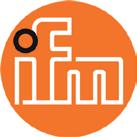
ifm electronic gmbh ifm is one of the world’s leading sensor companies in the automation of measurement and control, optimizing technical processes in almost all industries.
+49 201 24 22 0 info@ifm.com www.ifm.com

Bedeschi S.p.A
For more than a century, Bedeschi is providing effective and reliable solutions in a wide variety of industries (bulk handling, marine logistics and mining), capitalizing on synergies and cross competences.
Via Praimbole 38, 35010 Limena (PD) – Italy
Tel: : +39 049 7663100 Fax: +39 049 8848006 Email: sales@bedeschi.com Web: www.bedeschi.com

The BEUMER Group is an international leader in the manufacture of bulk material handling systems: Overland Conveyor Pipe Conveyor Stacker & Reclaimer Shiploader
Tel.: +49 2521 240 E-mail: info@beumer.com Web: www.beumer.com

Telestack are a leading global manufacturer of equipment for the bulk material handling industry including Ship Loaders/Unloaders, Hopper Feeders, Truck Unloaders, Bulk Reception Feeders, Stockpiling Conveyors, Link Conveyors and Telescopic Stackers. Tel: +44 (0)2882 251100 Email: sales@telestack.com www.telestack.comw

LASE Industrielle Lasertechnik GmbH
LASE offers innovative and productive solutions for ports by combining state-of-the-art laser scanner devices and sophisticated software applications. We are specialised in the fully automated handling of containers, cranes or trucks.
Rudolf-Diesel-Str 111 D-46485 Wesel, Germany Tel: +49 (0) 281 - 9 59 90 - 0 info@lase.de www.lase.de

DRY AGRIBULK MATERIALS HANDLING SYSTEMS :
– Portable grains pumps
– Pneumatics continuous barge and ship unloaders 100-1200 tph
– Simporter twin-belt unloader up to 2500 tph
– Loaders up to 2500 tph
Complete turnkey projects VIGAN Engineering S.A.
Belgium
Tél.: +32 67 89 50 41 www.vigan.com/info@vigan.com
DELLNER DAMPERS AB
Customised damper and buffer solutions for container spreaders and ship-to-shore, rail mounted gantry and process crane’s. When fitted to spreaders, our dampers protect the hydraulics’ and reduce noise. Our HYBUFF buffers protect operators and prevent damage in the event of an involuntary impact.
P.O. Box 51, SE-642 22, Sweden +46-(0)157-45 43 40 www.dellnerdampers.se/

Rohde Nielsen A/S Specialising in capital and maintenance dredging, land reclamation, coast protection, Port Development, Filling of Caissons, Sand and Gravel, Offshore trenching and backfilling
Nyhavn 20 Copenhagen K. DK-1051
Denmark +45 33 91 25 07 mail@rohde-nielsen.dk www.rohde-nielsen.dk
VAHLE is the leading specialist for mobile power and data transmission
VAHLE provides the solutions to reduce the carbon footprint while increasing the productivity. RTGC electrification including positioning and data transmission making RTGC ready for Automation.
Westicker Str. 52, 59174 Kamen, Germany Email: port-technology@vahle.de Web: www.vahle.com
Vigan ID.indd 1 25/01/2022 12:03
Over 60 years supporting Container Terminals in port operations: we create strategic value and increase profitability through solid and reliable STS Portainer® and RTG Transtainer® cranes, services & Advanced Port Technologies.
PACECO® CORP. World Headquarters 25503 Whitesell Street Hayward, CA 94545 Tel (510) 264-9288 email@pacecocorp.com www.pacecocorp.com
P4.1 e-chain® Energy chain with optional intelligent wear monitoring for double the service life, travels of up to 1.000 m, speeds of up to 10 m/s and fill weights of up to 50 kg/m.
Heavy duty rol e-chain® P4HD.56R The new heavy-duty rol e-chain meets all the relevant requirements for container cranes of the next and next-but-one generations. Longer and longer travels, greater dynamics, short stress cycles, zero failures.
SFT is the leading fender manufacturer with +60 years of group experience in the design of safety critical fender system that protect vessels, port infrastructure and people.

SAMSON Materials Handling Ltd specialises in the design and manufacture of mobile bulk materials handling equipment for surface installation across multiple industrial segments. Designed for rapid onsite set-up and continuous high performance SAMSON equipment provides an excellent return on investment.
SAMSON Materials Handling Ltd specialises in the design and manufacture of mobile bulk materials handling equipment for surface installation across multiple industrial segments. Designed for rapid onsite set-up and continuous high performance SAMSON equipment provides an excellent return on investment.

Taylor Machine Works, Inc.
Gemini House Cambridgeshire Business Park, 1 Bartholomew’s Walk, Ely Cambridgeshire CB7 4EA England, United Kingdom (UK)
Gemini House Cambridgeshire Business Park, 1 Bartholomew’s Walk, Ely Cambridgeshire CB7 4EA
Taylor Machine Works designs, engineers, and manufactures more than 100 models of industrial lift equipment with lift capacities from 4,000-lbs. to 125,000-lbs. YOU CAN DEPEND ON BIG RED!
Tel: +44 1353 665001
England, United Kingdom (UK)
Fax: +44 1353 666734 sales@samson-mh.com www.samson-mh.com
Tel: +44 1353 665001 sales@samson-mh.com www.samson-mh.com
3690 N Church Avenue Louisville, MS 39339 USA +1 662 773 3421 contact_sales@taylorbigred.com www.taylorbigred.com
igus® GmbH Spicher Str. 1a, 51147 Köln, Germany Tel. +49-2203-9649-0 info@igus.eu igus.eu/P4.1
igus® GmbH Spicher Str. 1a D-51147 Köln, Germany Tel. +49-2203-9649-0 info@igus.eu igus.eu/P4.1

As one of the leading manufacturers of quick connector systems,Stäubli covers connection needs for all types of fluids, gases and electrical power.
Tel: +33 4 50 65 61 97 connectors.sales@staubli.com www.staubli.com/en-de/ connectors/

We offer the full range of customized fender solutions and maintain production facilities for high-quality rubber products, steel panels and foam fenders. Join the safe side. contact@sft.group www.sft.group Fogmaker develops, manufactures, and markets fire suppression systems for engine compartments with high pressure water mist. Fogmaker is a market leader for automated fire suppression systems with 200,000 installations in more than 50 countries since 1995.
Tel: +46 470 77 22 00 info@fogmaker.com www.fogmaker.com

MRS Greifer GmbH
Grabs of MRS Greifer are in use all over the world. They are working reliably and extremely solid. All our grabs will be made customized. Besides the production of rope operated mechanical grabs, motor grabs and hydraulic grabs we supply an excellent after sales service.
Talweg 15-17, Helmstadt-Bargen 74921, Germany
Tel: +49 (0)7263 - 91 29 0 Fax: +49 (0)7263 - 91 29 12 info@mrs-greifer.de www.mrs-greifer.de

Orts GMBH Maschinenfabrik
Over 40 years experience constructing and manufacturing a wide range of grabs, including electro-hydraulic grabs (with the necessary crane equipment) radio controlled diesel hydraulic grabs, 4, 2 and single rope grabs all suitable for bulk cargo.
Schwartauer Str. 99 D-23611 Sereetz • Germany
Tel:+49 451 398 850
Fax: +49 451 392 374 soj@orts-gmbh.de www.orts-grabs.de








Conductix-Wampfler
VISYOy








Künz GmbH
Founded in 1932, Künz is now the market leader in intermodal rail-mounted gantry cranes in Europe and North America, offering innovative and efficient solutions for container handling in intermodal operation and automated stacking cranes for port and railyard operations.
Gerbestr. 15, 6971 Hard, Austria T: +43 5574 6883 0 sales@kuenz.com www.kuenz.com

SANY Europe GmbH
offers a broad spectrum of high-performance mobile port machines such as Reach Stacker, Empty Container Handler, Heavy Duty Forklift Trucks and Material Handler
Sany Allee 1 50181 Bedburg, Germany Tel: +49 2272 90531 100 Email: info@sanyeurope.com www.sanyeurope.com
Sany Allee 1 D-50181 Bedburg Tel: +49 2272 90531 100 Email: info@sanyeurope.com www.sanyeurope.com


Visy systems reduce expenses, optimize safety & security, and increase throughput capacity via process automation. Our singleplatform gate operating system and OCR solutions manage all cargo, assets & personnel movements via quay, rail or road to keep operations moving.
VISY takes pride in solving operational problems, specialising in gate automation and access control solutions in ports and terminals. Their solutions streamline processes resulting in saving money and increasing productivity.
Tel: +358 3 211 0403
Portchain is the leading provider of berth alignment solutions for container terminals and carriers. Portchain works with leading container carriers and terminal operators to create sustainable win-win solutions to improve operational efficiency for container shipping. Founded in 2017 and based in Copenhagen, Portchain works on a global scale serving container terminals and carriers across Europe, Asia, North America, South America and Africa. Amaliegade 14A, st, 1256 København, Denmark sales@portchain.com www.portchain.com

Taiwan is a major maritime hub on the world’s ocean shipping routes and, because of its strategic location, it has developed into a transshipment hub for East Asian near- and ocean-going ships. In the last few years Asian ports are up against intense rivalry as a result of the economic growth of China and Southeast Asia as well as the expanding trade network in Greater East Asia. No.10, Penglai Rd Gushan Dist. 804004 Taiwan www.twport.com.tw/en/

IDENTEC SOLUTIONS is an industry-leading, trusted partner in managing and monitoring reefer containers and optimizing entire terminal operations through solutions like Reefer Runner and Terminal Tracker. Contact: Stephan Piworus, Global VP Sales Marine & Ports, spiworus@identecsolutions.com; Mobile: +49 151 74122606 www.identecsolutions.com
The world specialist in Power and Data Transfer Systems, Mobile Electrification, and Crane Electrification Solutions. We Keep Your Vital Business Moving!
Rheinstrasse 27 + 33
Weil am Rhein 79576 Germany
Tel: +49 (0) 7621 662 0 Fax: +49 (0) 7621 662 144 info.de@conductix.com www.conductix.com

Reefer Monitoring Solutions
Increase efficiency. Reduce costs. Improve safety.
RTE’s 40 years of innovation and experience deliver the most complete system of reefer monitoring solutions for today’s growing terminal operations. Discover what over 80 reefer terminals already have.
Visit us at: rte-usa.com Or email us at: info@rte-usa.com
New York | Panama

The world leading manufacturer of Sideloaders, self-loading semi-trailers for versatile & efficient container handling. www.hammarlift.com info@hammarlift.com

TVH is a global player in the field of spare parts and accessories for heavy forklifts, reach stackers, container handlers, spreaders and terminal tractors. With over 96,000 references in stock and more than 644,000 known references, TVH offers quality replacement parts for many brands and makes, including the hard-to-find ones.
Tel: +44 2476 585 000 sales.team.uk@tvh.com www.tvh.com
ELME Spreader AB
ELME Spreader, world’s leading independent spreader manufacturer supports companies worldwide with container handling solutions that makes work easier and more profitable. Over 21,000 spreaders have been attached to lift trucks, reach stackers, straddle carriers and cranes.
Stalgatan 6 , PO Box 174 SE 343 22, Almhult, Sweden
Tel: +46 47655800
Fax: +46 476 55899
sales@elme.com www.elme.com

The Brain of Logistics
With more than 30 years experience in IT Solutions and Business Operation Consultancy DSP offers a large portfolio of professional services and products to support terminal operations processes and system.
DSP Data and System Planning SA Via Cantonale 38 6928 Manno, Switzerland
Tel: +41 91 230 27 20
Fax: +41 91 230 27 31 info@dspservices.ch www.dspservices.ch
Solvo Europe B.V.
Solvo’s software solutions such as TOS or WMS help container and general cargo terminals take full care of their cargo handling processes and make sure the clients expectations are exceeded.
Prinses Margrietplantsoen 33, 2595AM, The Hague, The Netherlands Tel: +31 (0) 702-051-709 Email: sales@solvosys.com www.sovosys.com









Tideworks Technology provides comprehensive terminal operating system solutions for marine and intermodal terminal operations worldwide. Tideworks works at every step of terminal operations to maximize productivity and customer service. info@tideworks.com +1 206 382 4470 www.tideworks.com
MAFI Transport-Systeme GmbH
Specialised in the development and production of heavy-duty equipment for transporting containers, semi-trailers, cargo/roll trailers and special container chassis in ports and industry.
Hochhäuser Str 18 97941 Tauberbischofsheim, Germany Tel: +49 9341 8990 sales@mafi.de www.mafi.de
TGI Maritime Software is a Terminal Operating System editor and integrator specialized in the support of Small to Medium Terminals. Its expertise is built on 34 years of experience within the maritime sector. TGI provides comprehensive services to its customers all along their projects. OSCAR TOS and CARROL TOS have already been successfully handled by 40 container and RoRo terminals worldwide.
Tel : +33 (0)3 28 65 81 91 contact@tgims.com www.tgims.com
Brunton Shaw UK is a successful manufacturer of high quality wire ropes for a wide range of applications. The company effectively combines more than 130 years of experience and tradition with an up to the minute range of products, and a customer service package ideal for the modern market place.
Tel: +44 1909 537626 Email: info@brunton-shaw.co.uk
www.brunton-shaw.com



Click here to read article on Port Strategy online

Tailor-made digital solutions for smooth workflows and greater sustainability.
Whether maritime or intermodal ports, globalization and heavily used trade routes are accelerating the trend towards smart ports. Here, the vehicles may drive without people, but never without tires. At Continental, we take into account all facets of terminal operations that contribute to more efficient and sustainable processes.
Our customized digital tire solutions are therefore tailored to the individual needs of port vehicle fleets: Scalable solutions such as ContiConnect for large port operation fleets, ContiConnect Lite, a leaner version for mobile devices and a valve cap sensor solution. So, whatever your fleet requirements may be, you can be sure: we deliver.
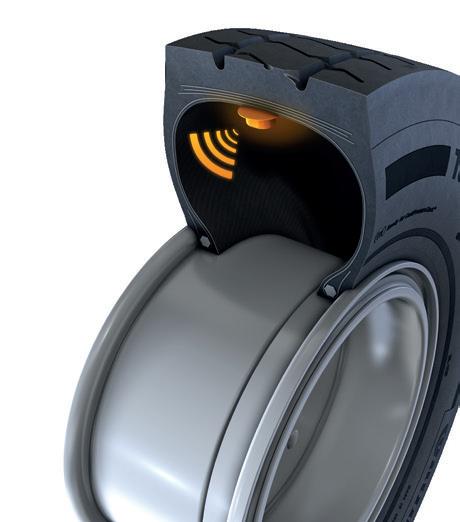

CRUISE CAPITAL OF THE WORLD GLOBAL GATEWAY OF THE AMERICAS

An ECONOMIC ENGINE GENERATING $61 BILLION and 340,000 JOBS for the STATE of FLORIDA




